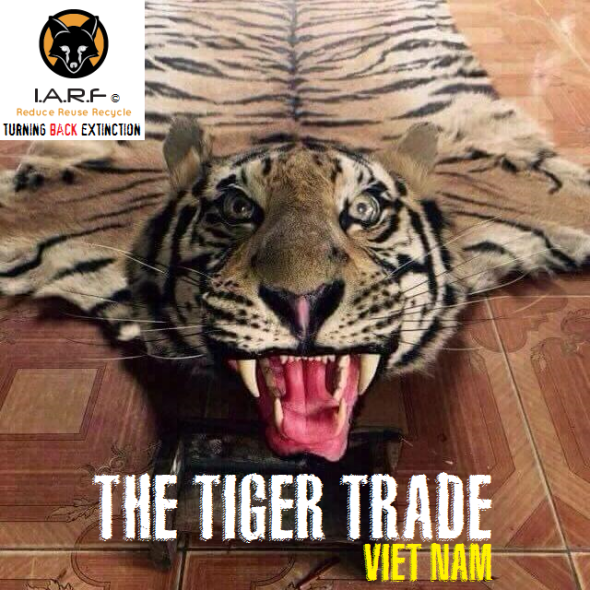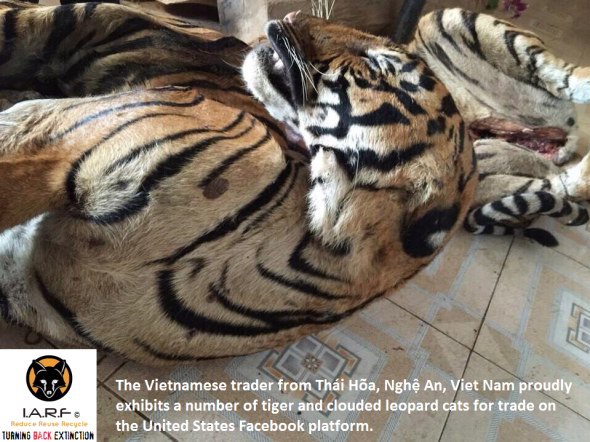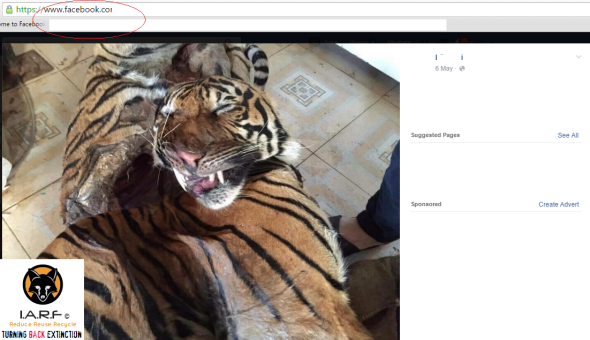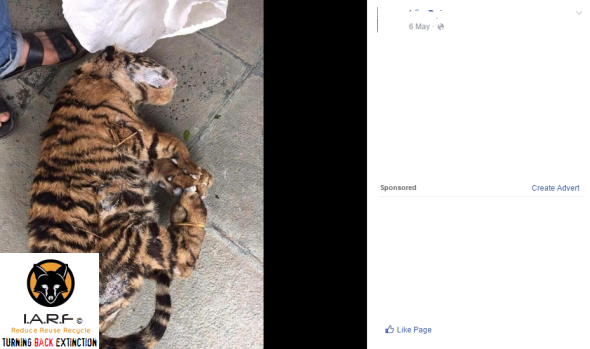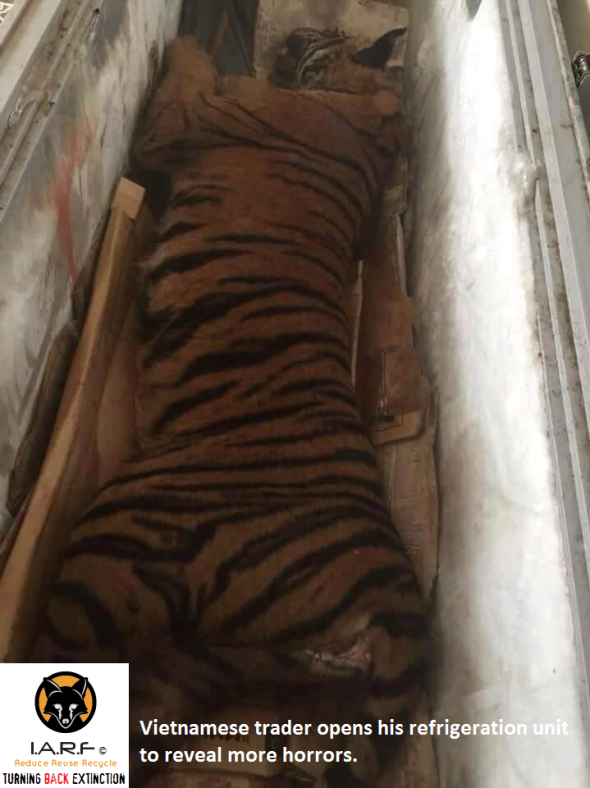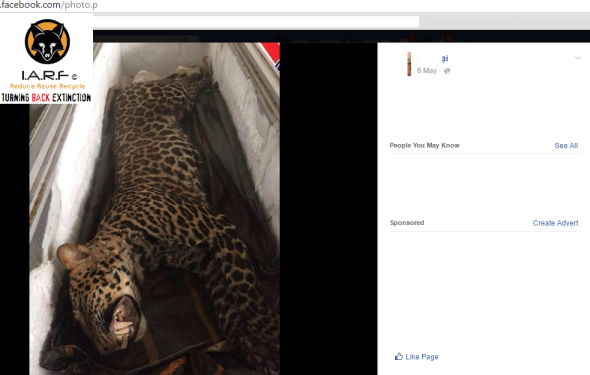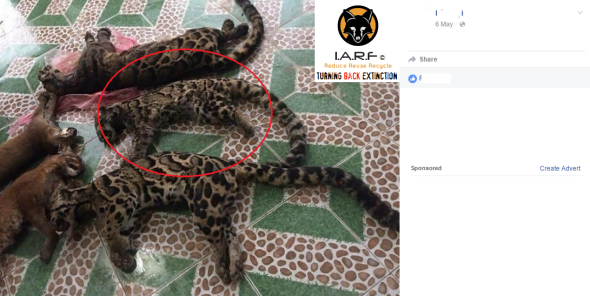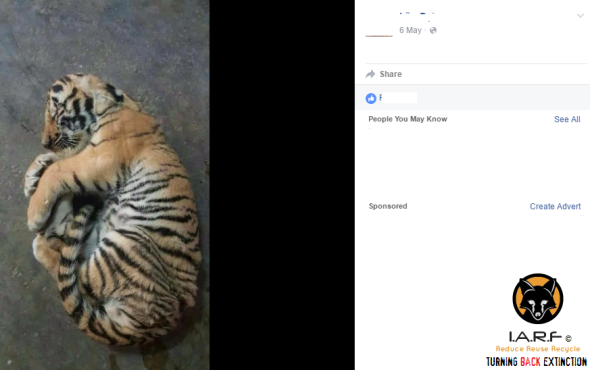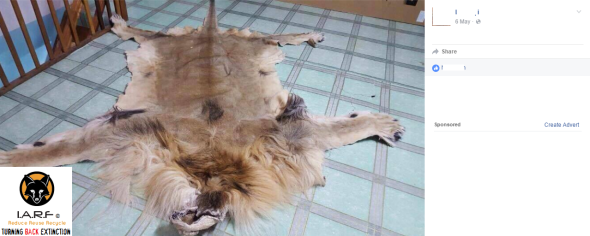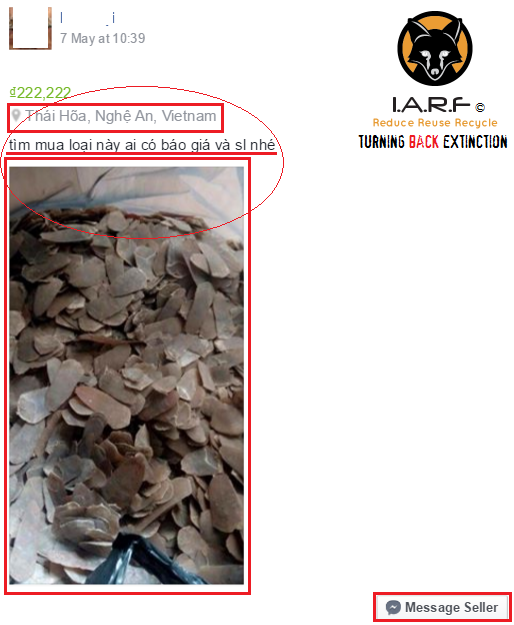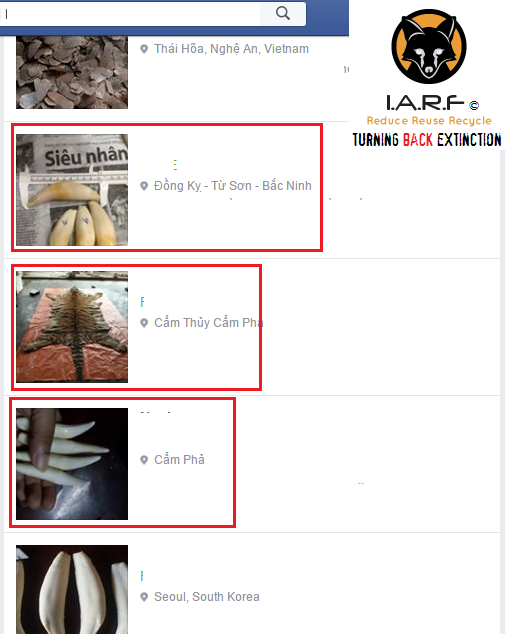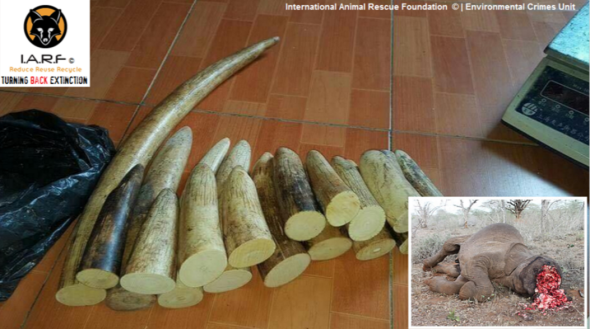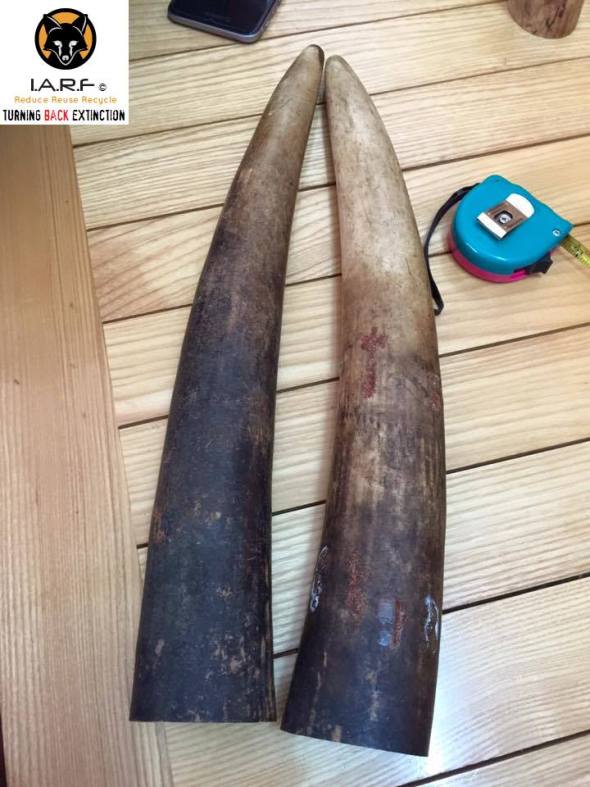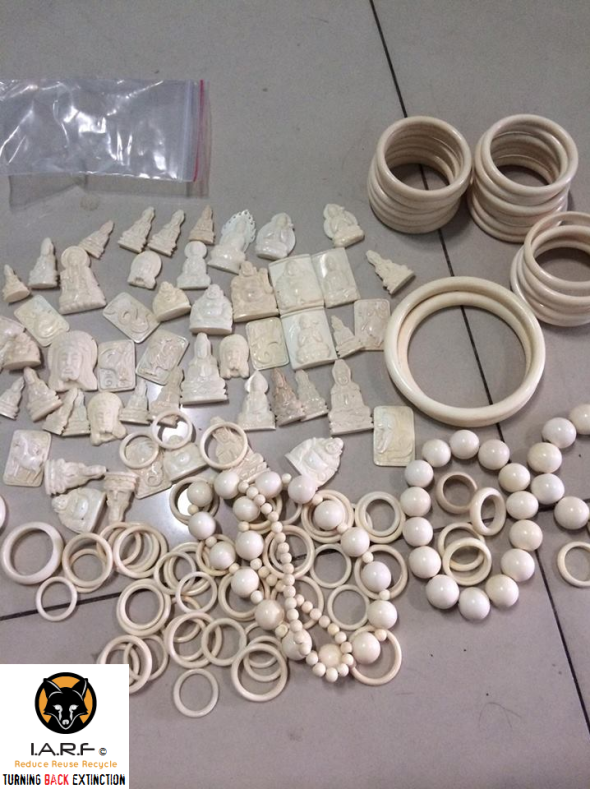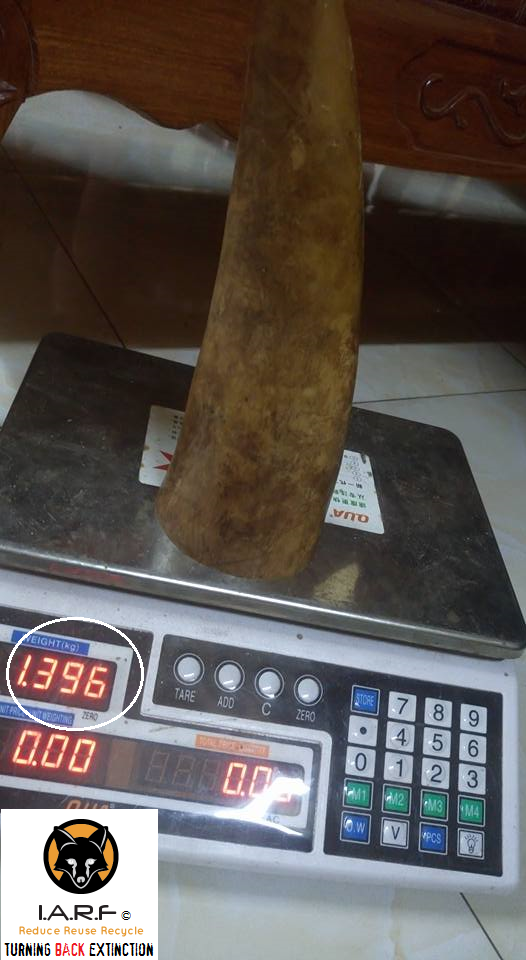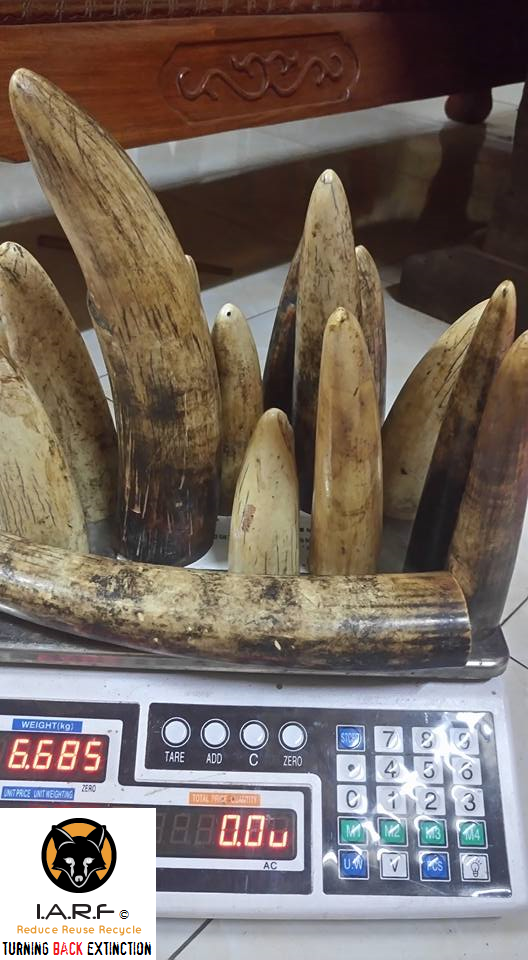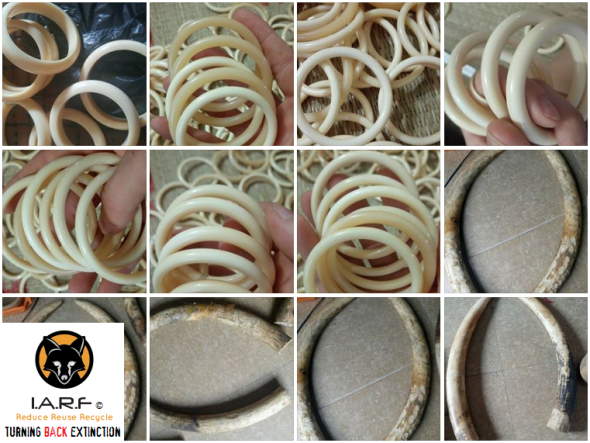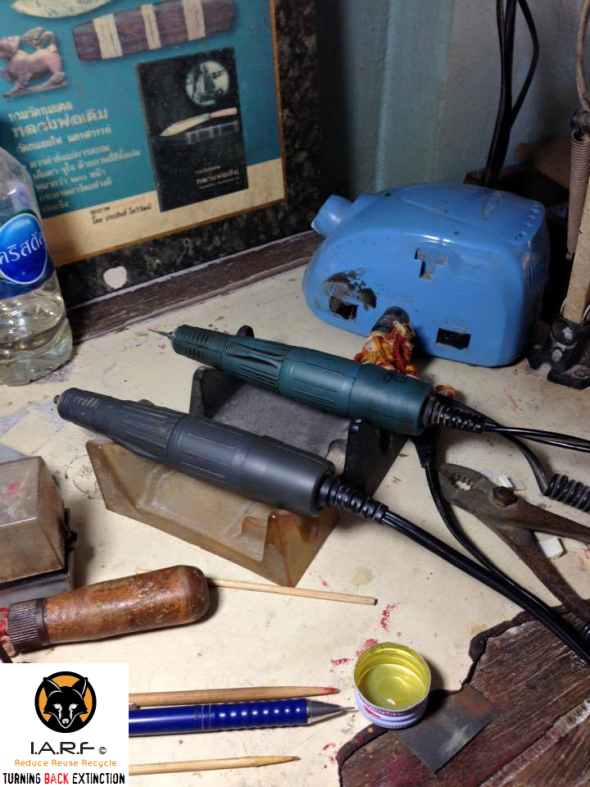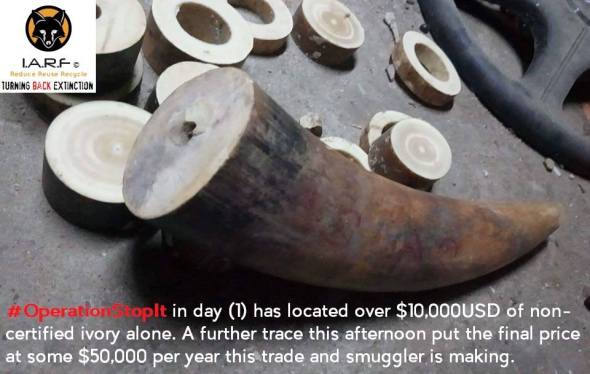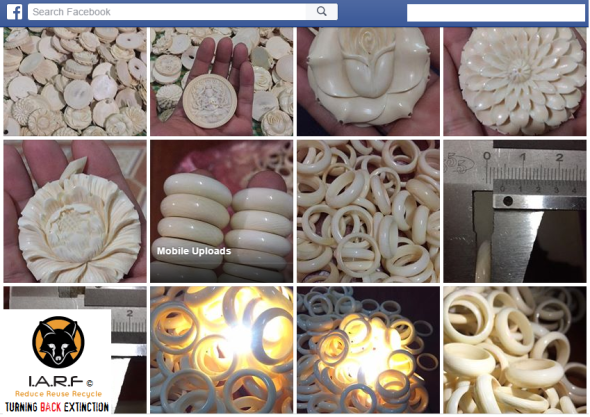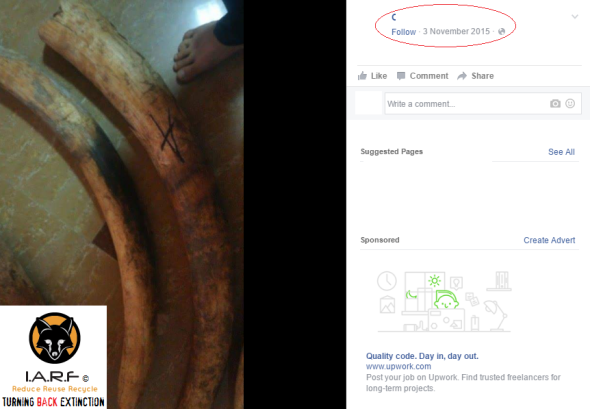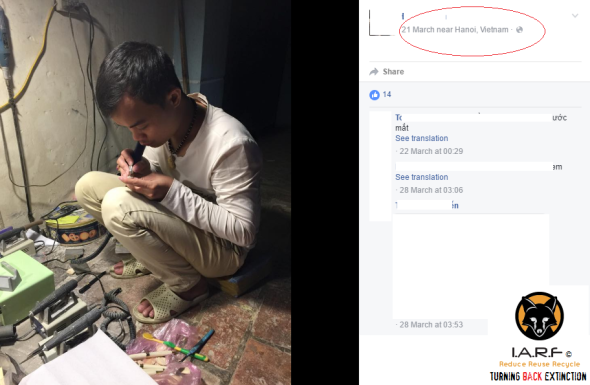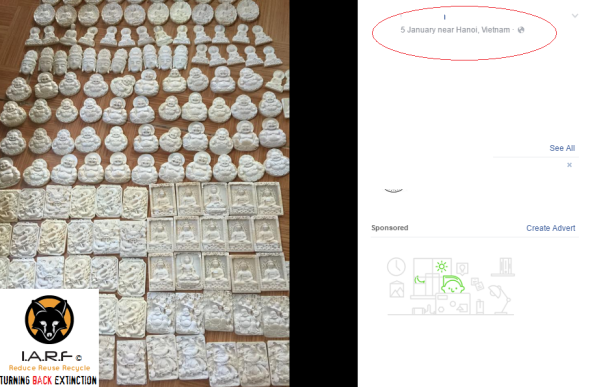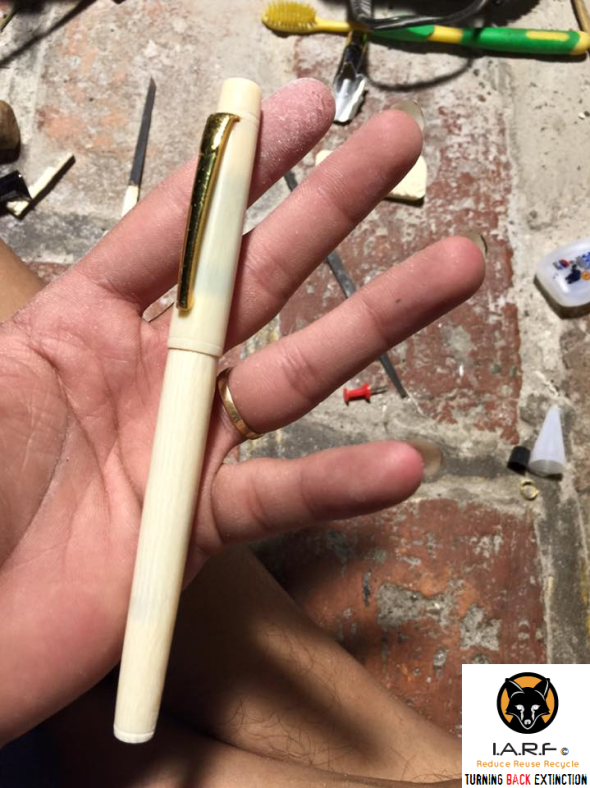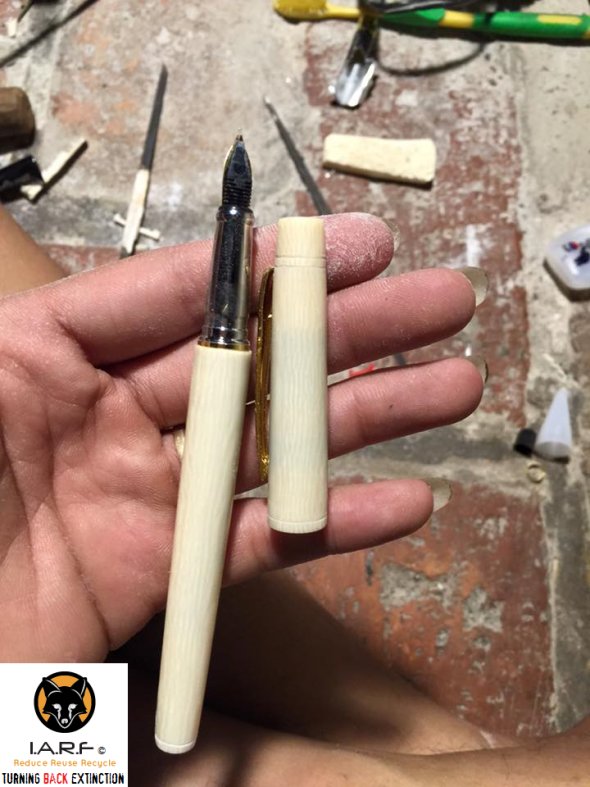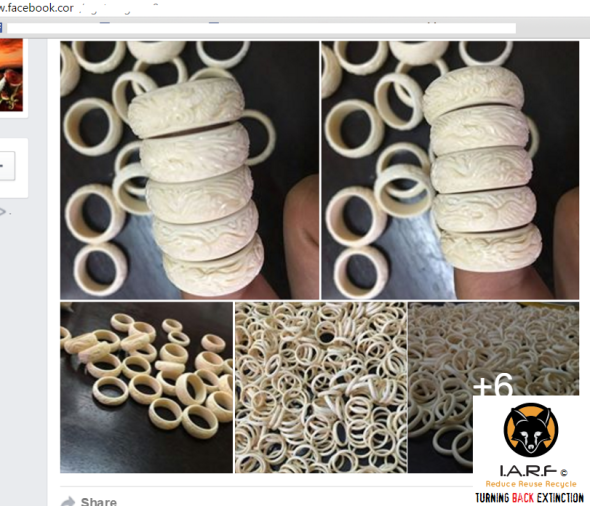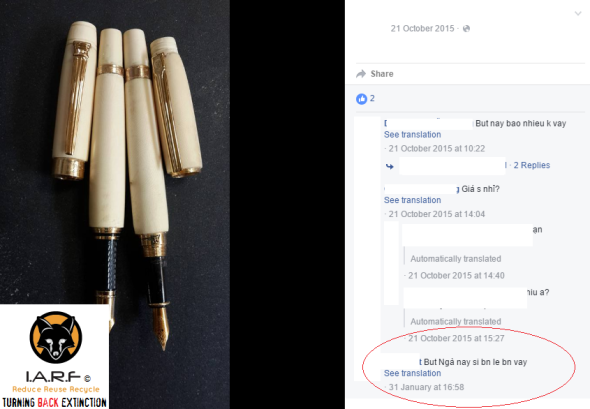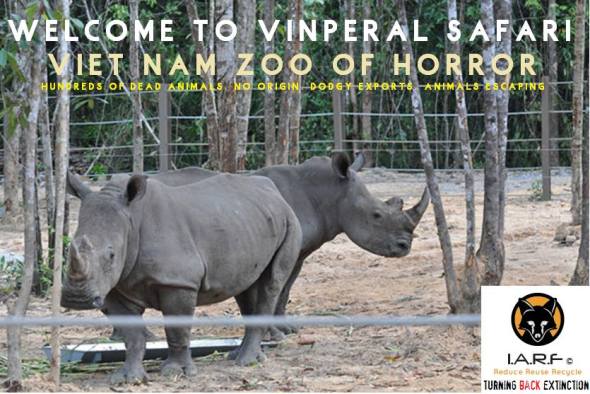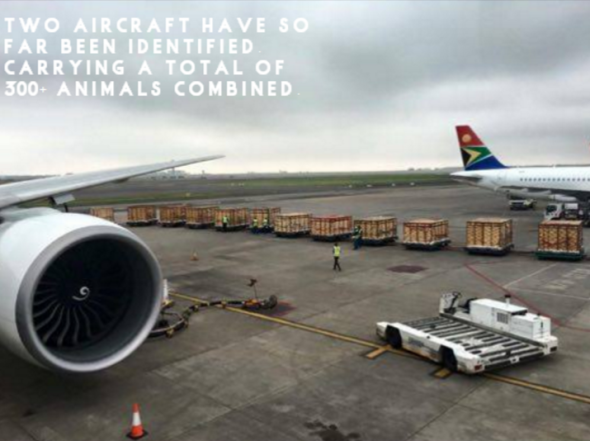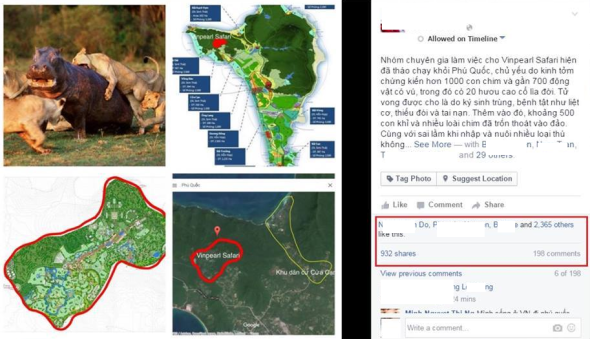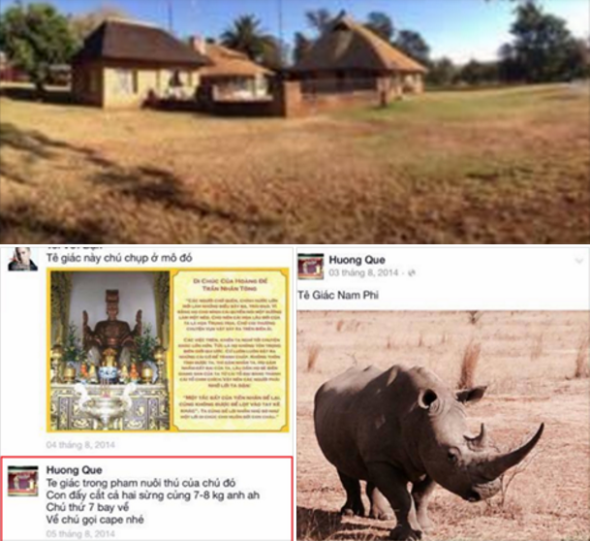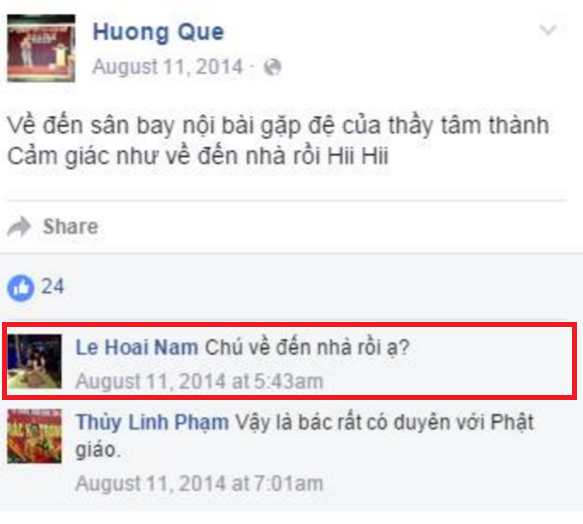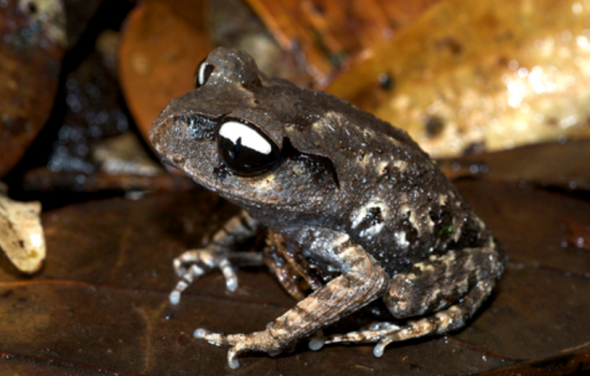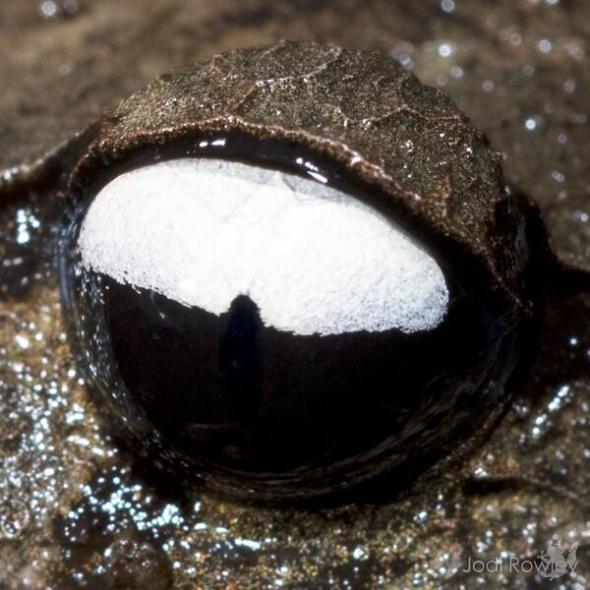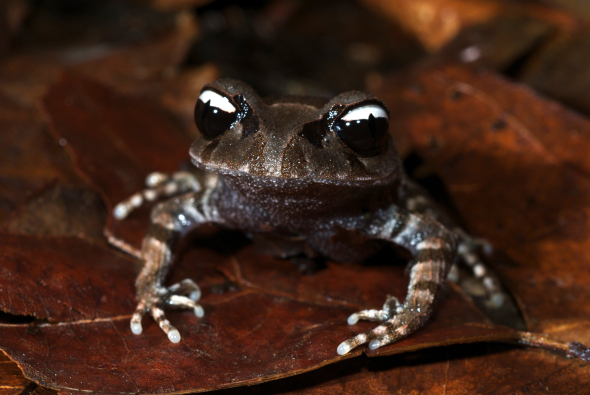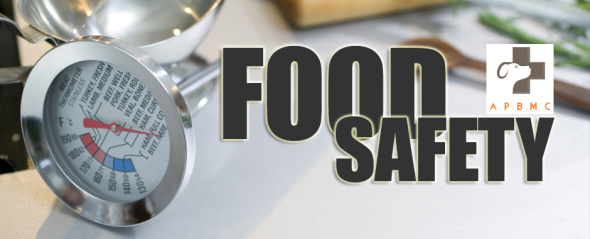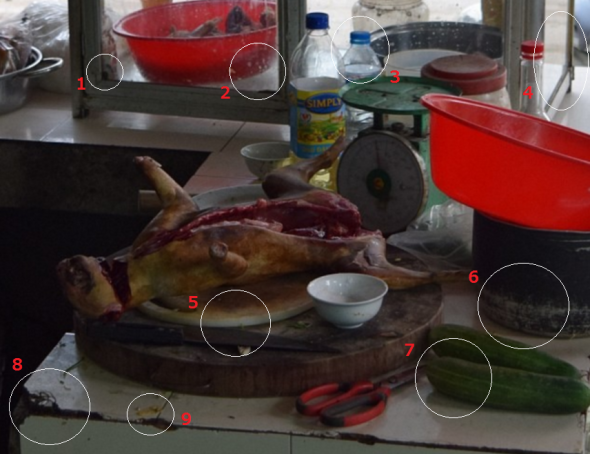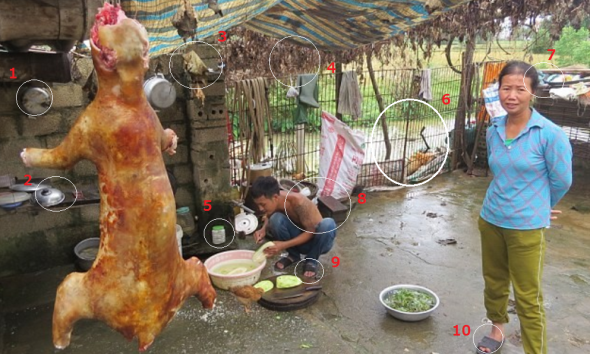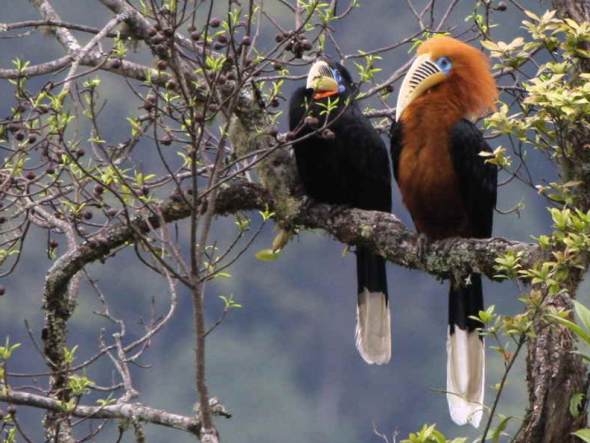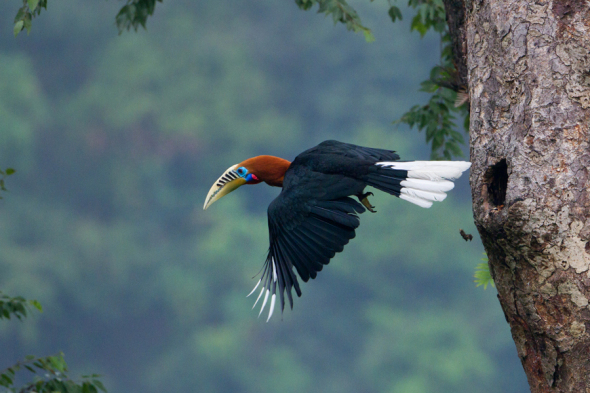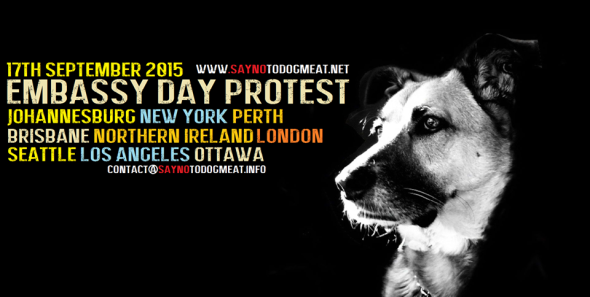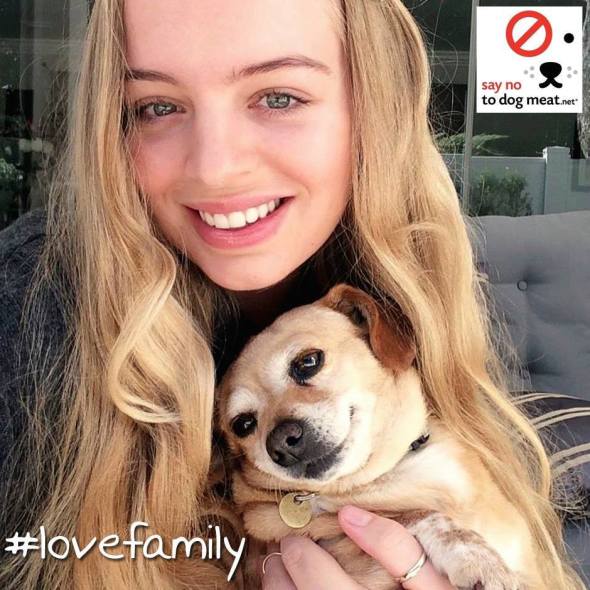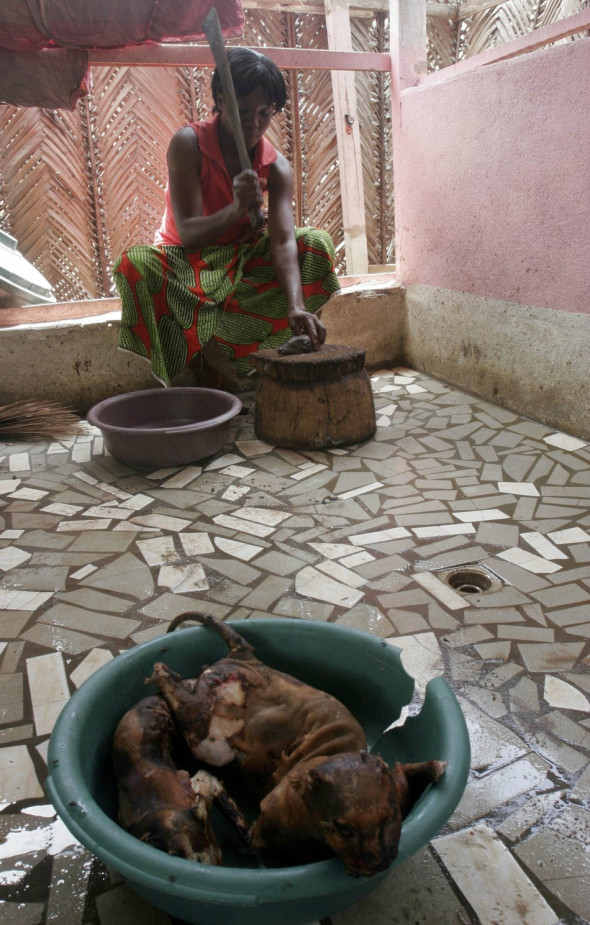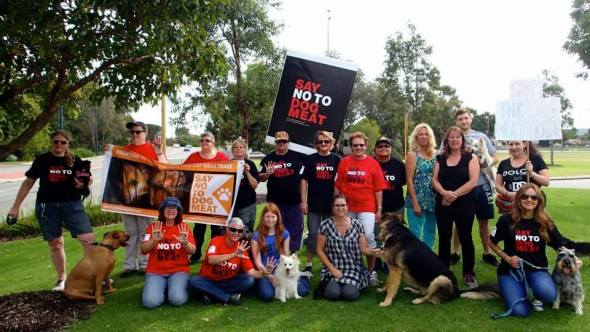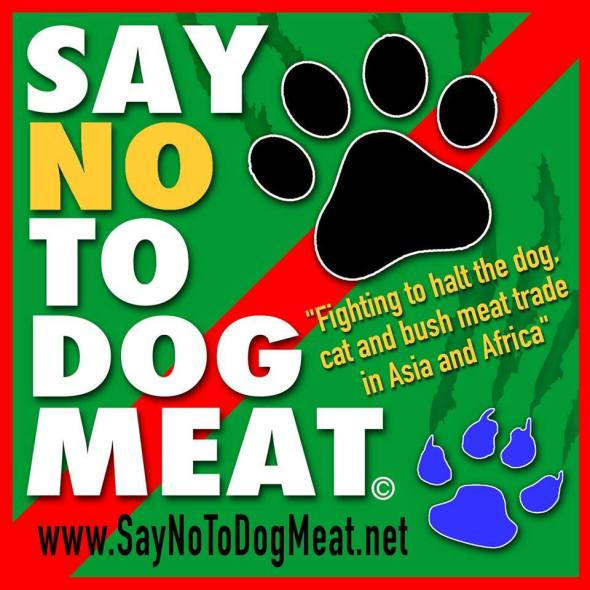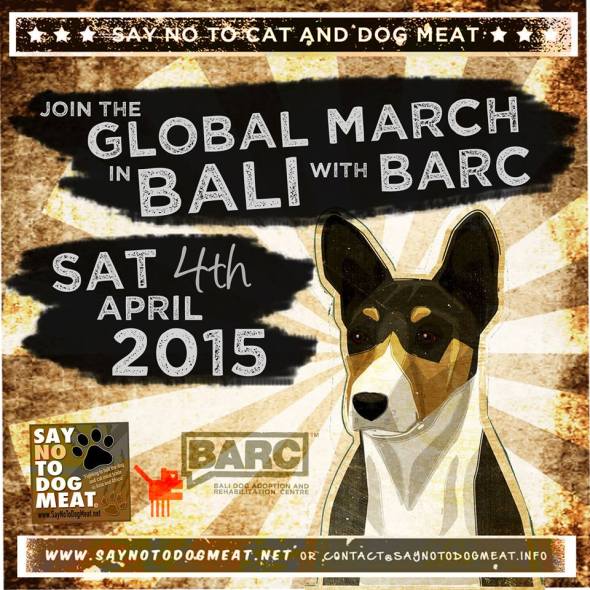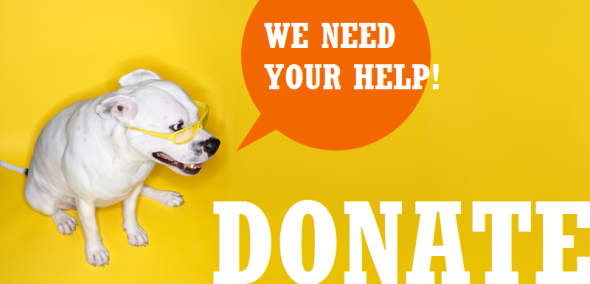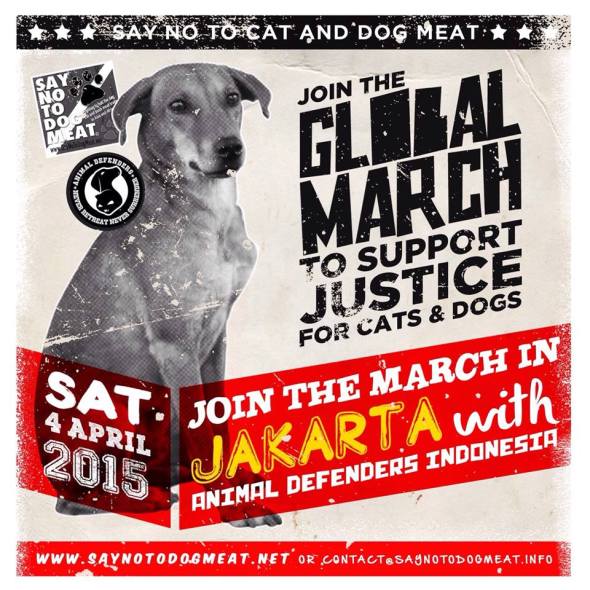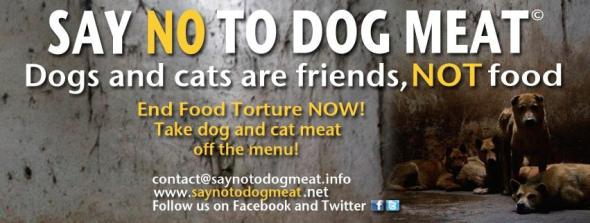SHOULD VIET NAM BE SLAPPED WITH TRADE SANCTIONS? | ILLEGAL WILDLIFE TRADE.
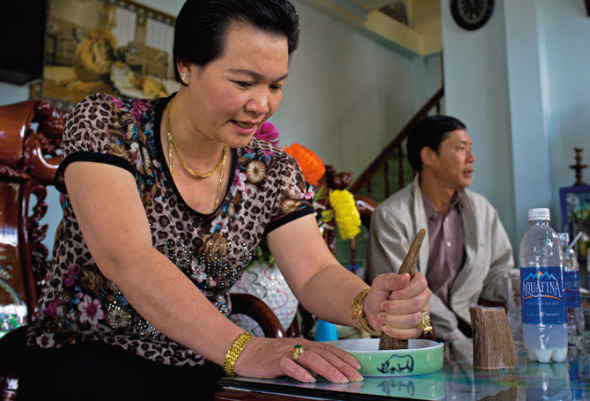
SHOULD VIET NAM BE SLAPPED WITH FULL TRADE SANCTIONS?
Since 2012 International Animal Rescue Foundation Africa’s (Cyber and Environmental Crimes Team) have been investigating Viet Nam’s illicit and illegal wildlife trade more closely than we’ve ever done. Back in January 2015 I Dr Jose C. Depre the (CEO) ordered a meeting with both units from the Environmental Cyber Crimes Team and External Affairs Unit); both focusing on the ground and online trade of illegal wildlife contraband. My aim was to increase both online and ground team investigations to begin breaking the back of these ruthless criminals throughout Asia and Africa.
International Animal Rescue Foundation Africa since founded have conducted 1,033 investigative surveys relating to all areas Viet Nam’s illegal wildlife trade (online and ground trade). However it wasn’t until January 2015 after uncovering a colossal rhino horn trafficking ring within Thailand and Viet Nam that we eventually decided Viet Nam had to be investigated more in-depth - all of which has resulted in a number of arrests and confiscation orders this year alone. The ongoing investigation was ordered due to a suspicion that the illicit ivory trade was increasing in Viet Nam too. Furthermore various organisations, media and press had stated that Viet Nam’s wildlife trade was actually decreasing, neither of which was true!.
I.A.R.F.A’s investigations aren’t just focused on Viet Nam. Specialist teams locate traffickers, suppliers and even poachers. These highly trained investigative officers move from one country to the next discretely monitoring and following various traffickers and kingpins (not forgetting befriending others too - which in many cases can be quite dangerous). While most of our investigations have focused primarily on Viet Nam, China, Thailand, Laos, Japan and Malaysia. Investigative officers have also been working within Uganda, Angola, South Africa, Namibia, The Democratic Republic of the Congo, South Sudan, Niger, Nigeria and Burkina Faso (among many other countries).
In four days time South Africa will be hosting the next Conference of Parties (CoP17). The Convention on International Trade in Endangered Species of Wild Flora and Fauna (CITES), that now hosts some 184 CITES signatories which will be debating numerous issues relating to both flora (plants) and (fauna) animals. The meeting will take place from the 24th September to the 5th October (2016). Back in 2011 Interpol estimated the extent of the illegal wildlife trade between $10 billion and $20 billion per year. This figure has gradually increased since 2014.
The illegal wildlife trade isn’t confined to just one country. Many countries around the world host wildlife trafficking and dealing routes extending to every continent. Conservationists say the problem is most acute in Southeast Asia. There, trade linkages to key markets in China, the United States, and the European Union; lax law enforcement; weak border controls; and the perception of high profit and low risk contribute to large-scale commercial wildlife trafficking. The ASEAN Wildlife Enforcement Network (ASEAN-WEN) ASEAN Wildlife Enforcement Network, supported by the U.S. Agency for International Development and external funders, is one response to the region’s illegal wildlife trade networks.
Figures from 2014-2015 have shown a startling increase relating to the funds generated from the illegal wildlife trade. Today illegal wildlife trade is estimated to be worth US$50-150 billion per year. The global illegal fisheries catch is valued at US$10-23.5 billion a year and illegal logging, including processing, at US$30-100 billion. (Source: Illegal Wildlife Trade 2014-2015). So as one can see no matter how many meetings we’ve been holding the illegal wildlife trade is skyrocketing to levels that we’ve never seen before. The question is though, how do we as environmentalists stop this, how can we force violating countries to take notice?
International Animal Rescue Foundation Africa have been calling on CITES for more than five years now to impose trade sanctions against offending countries. Unfortunately CITES and their signatories haven’t in our opinion taken a blind bit of notice, especially when it comes to Viet Nam that has been blacklisted as ‘possibly the largest threat to global wildlife on the planet?’. A trade sanction (which is what we want placed against Viet Nam and other offending countries) is a trade penalty imposed by one nation onto one or more other nations. Sanctions can be unilateral, imposed by only one country on one other country, or multilateral, imposed by one or more countries on a number of different countries. Often allies will impose multilateral sanctions on their foes.
From 2015 we (the organisation) have located a staggering $13.5 million (USD) of illegal wildlife contraband - most of which is being traded online via various forums such as Facebook within secret groups. (You can view a some of the contraband we investigative via our Facebook page here). On speaking to numerous traders to try and understand why this trade was being conducted on line; the traders have always stated: (Its more safer to trade, they can trade to a wider market without the need to carry their products over many miles. Finally, its quicker to trade into large private buy and sell forums anything that would be deemed ‘hot to handle’ such as Rhinoceros horn, elephant ivory, and pangolin parts (Etc).
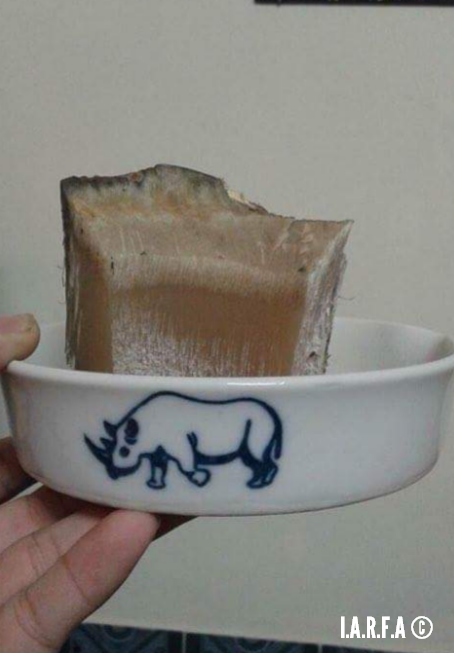
Image: Mr Tuan advertises the authenticity of recently smuggled rhino horn 11th August.
I.A.R.F.A have located over 21 African Rhinoceros horns traded illegally online and via ground markets since 2015 when we began our new anti wildlife trade operations and, 9 Indian One Horned Rhinoceros horns (all authentic). Mr Tuan, a Vietnamese national had no qualms whatsoever proving the legitimacy of his recently smuggled horn from South Africa. Anti Wildlife Trade Officers were invited to Mr Tuan’s Hanoi antiques shop of which in the back room were four recently poached Rhinoceros horns. I.A.R.F.A Anti Wildlife Trade Officers posing as interested buyers were offered the above in liquid form as a ‘so called aphrodisiac’.
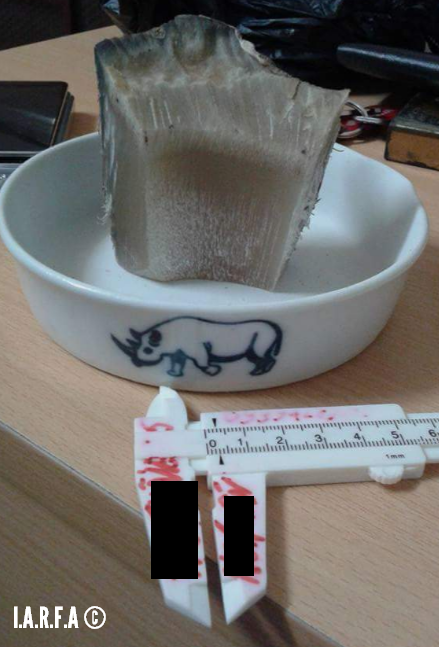
Image: Mr Tuan prepares to sell this horn to I.A.R.F.A investigators.
The above horn was measured up, weighed and offered to I.A.R.F.A investigative officers for a total of $4,000(USD). While the officers declined a small sample was purchased so that we could test the authenticity of this horn. Vietnamese investigative officers working with (I.A.R.F.A) the very next day took the sample to Viet Nam National University of which tests later revealed the horn originated from an African Rhinoceros based on the horns DNA.
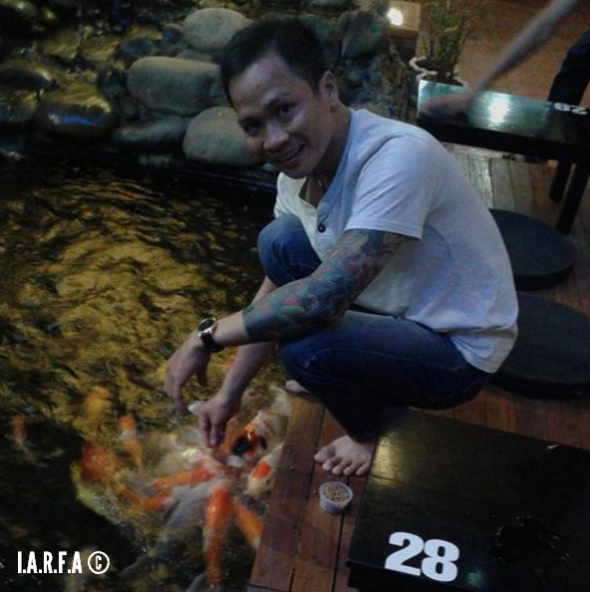
Image: One of Viet Nam’s many Rhino horn kingpins. Mr Tuan.
While we don’t make a habit of exposing ‘wealthy wildlife trade kingpins’. As we’re nearing the (CoP17 summit) we believe its time to begin naming and shaming some of the dons behind this ruthless trade in order to communicate our message far and wide to all CITES members that enough is enough, sanctions must be placed against all violating countries. Mr Tuan doesn’t just deal in large quantities of authentic Rhinoceros horn neither. Ivory, pangolin parts and the critically endangered Indochinese Box Turtle also fill Mr Tuan’s home and antiques shop. So Mr Tuan if you’re reading please do say cheese.
Meanwhile Mr Tuan is just a small piece of the ever-increasing illegal wildlife trade iceberg. In one group that we’ve been monitoring for over two years that’s yielded 9 arrests thus far this year (which we cannot name for legal reasons). Some 33,000 individuals all over the globe are trading ivory, tiger parts, bear claws, pangolin scales and critically endangered moon bear skins (among many other items). The vast majority of these online traders that lead investigative officers to some ground locations are either Vietnamese, Chinese, Malaysian, Indonesian, Indian, Belgium, Australian, American and Canadian traders. One trader was even located in London W12, and two others dealing from Paris, France.
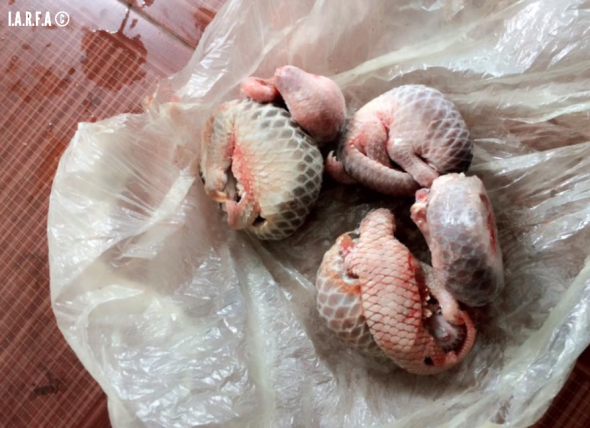
Image: Thailand smuggled endangered pangolins.
Rhinoceros horn is the least likely wildlife trade product that we come-by, simply because of its price, rarity, and the fact so many people around the globe are now putting their foot down relating to this animal part. Unfortunately its not just Rhinoceros horn that we witness being sold illegally online and on the ground. Mr Tu Su whom lives in Ha Tan, Viet Nam was clocked on the 19th August 2016 trading these smuggled pangolin parts online illegally.
Every year there are numerous arrests throughout Asia and convictions relation to pangolin poaching and trafficking, however no sooner is one dealt with - another smuggler and trader rears their ugly head, and can you blame them? All four Asiatic pangolins are now considered extremely rare to the point they’re nearing extinction. Furthermore as the species becomes more rarer - prices increase. These 6 pangolins were trading between $600(USD) and $1000(USD) each. Mr Tu Su has has quite a reputation relating to pangolin smuggling - so for the record below is Mr Tu Su’s face.
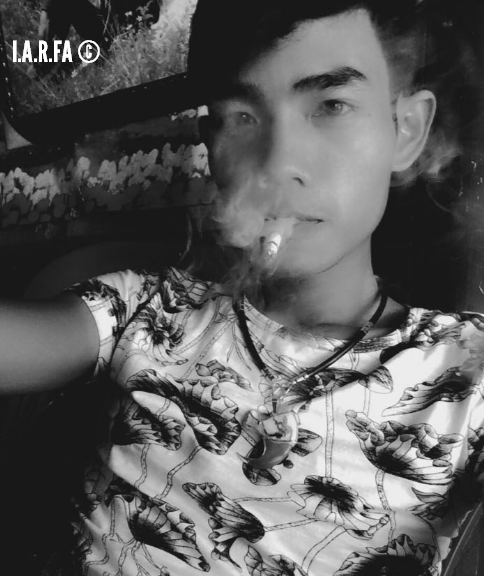
Image: Mr Tu Su - Pangolin smuggler and trader.

Image: Mr Tu Su - Pangolin soup.
All 8 species of Asian and African pangolins are ‘listed under Appendix II of CITES’, which means trade is regulated and monitored under CITES, (permits are required from exporting countries for any trade activity). To issue a permit, the exporting country must determine that this activity will have no detriment to the wild population.
As an additional protective measure, the CITES authority passed a (zero export quota for the four Asian species, which bans all commercial trade in these species). However, other purposes (scientific, research, etc.) can still be authorized by permit. For the four African species, there is no zero export quota, which means commercial trade is not prohibited, but permits are still required. Pangolins are also protected in their range states by domestic wildlife laws.
So Mr Tu Su if you’re reading then please note you’ve violated both domestic and international law, we’re holding your details too!
International Animal Rescue Foundation Africa have increased investigations relating to the illicit wildlife trade. Our two main areas of focus is that of the Rhinoceros horn trade and the ivory trade. Since 2015 our investigations surrounding the illegal ivory trade (have located a staggering $6 million(USD) of ivory smuggled from Africa into Thailand, China, Malaysia, Singapore and, Viet Nam.
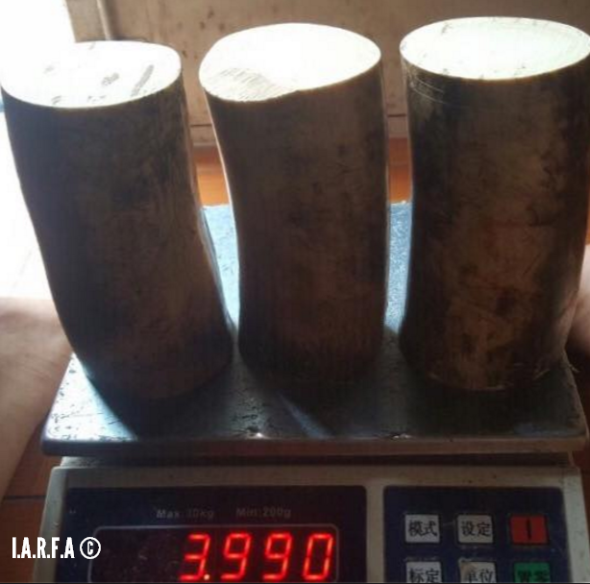
Image: Ivory trafficked from Tanzania onto Viet Nam.
Ivory trader and trafficker Mr Ban Me from Buôn Ma Thuột, Đắc Lắk, Vietnam was observed on the 16th August 2016 trading the ivory above online in one of three secret Vietnamese and Chinese ivory trading online forums. The ivory above is estimated to be around $6,500-$8,000(USD) for the lot.
Mr Ban Me makes no effort to conceal his lucrative online trade neither. When investigating this trader and trafficker we went back through many months of posts within the secret forum, then managed to locate Mr Ban Me who is aged around 35-30 years old. On locating the trafficker/trader it appears from the online evidence that ivory is coming in quick, measured up and weighed, of which either himself or friends then soon after set about to carve the ivory into jewelry.
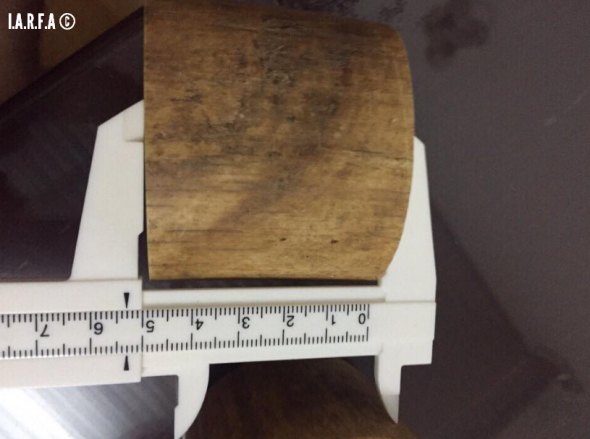
Image: Ivory measured up and weighed for sale and carving.
Since January 2015 (International Animal Rescue Foundations) Environmental Crimes Officers have underneathed new trading trends relating to the ‘online wildlife trade’. As explained in previous articles most traders nowadays will take delivery of illegal wildlife contraband. From there the wildlife parts are then photographed (as seen in the image below). Traders will either then set up a ‘pseudo Facebook profile’ or already have one in place. The Facebook profile will act as a mobile online shop.
Most traders and traffickers we’re investigating today use this method of online illegal trading. They know by using a throw away or cheap (non-traceable cell phone) that any chance of them being located is slim. Traders are rarely seen selling in bulk on the streets of Viet Nam or over the borders in other Asian countries. Buyers and traders feel safer trading, swapping or trafficking items uploaded to the internet.
Mr Ban Me takes delivery of a large quantity of ivory every month from Africa, most of which has been illegally trafficked into China. Once carved the items are then photographed again to sell online within secret trading rooms to hundreds if not thousands of people. The ivory seen above and below was ‘advertised’ to an audience of over 33,000 individuals.
So as you can see its incredibly difficult for us or any investigate organisation to track in quick time where these products are originating from and ending up. Traders use these rooms online because they know selling to a wider-ranged audience products can shift quickly. Unfortunately for Mr Ban Me we have his contact details, his address, his cell phone numbers, and even know who is selling too and buying from.
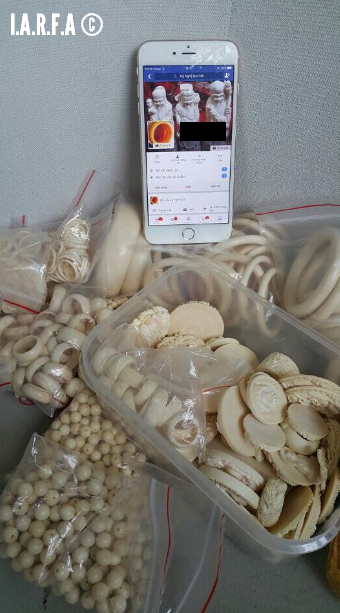
Image: Carved ivory on sale from the tusks observed and intercepted online.
Another shocking ‘concern’ is that Mr Ban Me ‘could be purchasing ivory from Thailand elephant traders’. I.A.R.F.A have known for many years now that ivory tusks are being shaved down from Asiatic elephants. A trace of Mr Ban Me’s cell phone images revealed further evidence that showed himself photographing Asian elephants onto his ‘Facebook ivory profile’. Should this be true - it will prove to be further damning evidence that elephants are being exploited within Asia for the ivory trade on a much larger scale than previously documented.
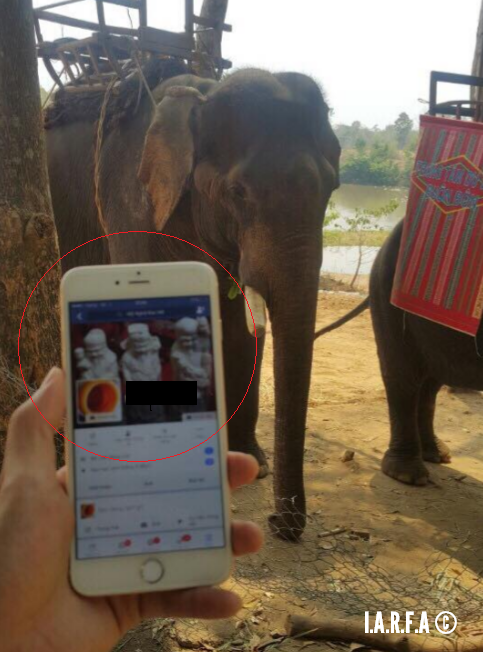
Image: Ban Me photographs Asian elephants onto ivory Facebook profile.
The only image we have of Mr Ban Me is that of his wood workshop in Viet Nam (pictured below). The entire Facebook profile (like many thousands more we have and continue to observe) depicts that of ivory and few rose wood products. The question is though - who’s supplying this young Asian man with ivory? I.A.R.F.A have demanded that Facebook and the F.B.I take action against this illicit trade, and even supplied the Social Media platform with an 11,000+ petition signature however as yet nothing is being done to combat this trade?
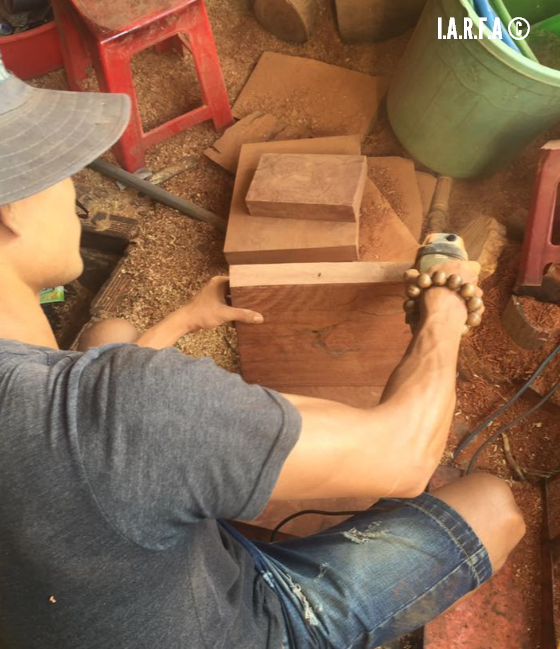
Image: Mr Ban Me carving wood in Viet Nam. where ivory is also traded.
Back in December 2015 International Animal Rescue Foundations (Environmental Crime Officers) passed hundreds of pages of evidence onto international law enforcement agencies and Interpol relating to illegal wildlife traders. There have been numerous arrests due to our investigation and, from that investigation other individuals have been looked into resulting in new investigations and arrests too on a global scale. However no sooner is one trader stopped - another one pops their ugly head up from the sand and begins trading.
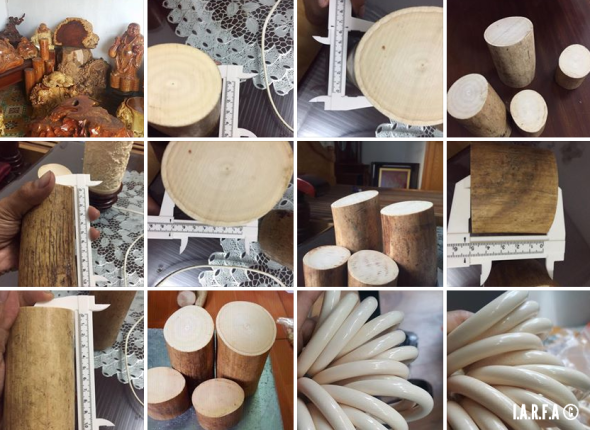
Image: Mr Ban Me’s ivory Facebook shop profile - ivory tusks, and carved ivory jewelry.
A further trader that ‘openly admitted to I.A.R.F.A Environmental Crimes Officers tried to sell these tusks (pictured below) to an I.A.R.F.A investigator. Going under the name of Mr Thường, from Hanoi Viet Nam, he like Mr Ban Me made no effort whatsoever to conceal his hoard of illicit ivory - most of which was from African elephants. Furthermore he too like Ban Me had created a ‘pseudo Facebook profile to trade illegally elephant ivory’.
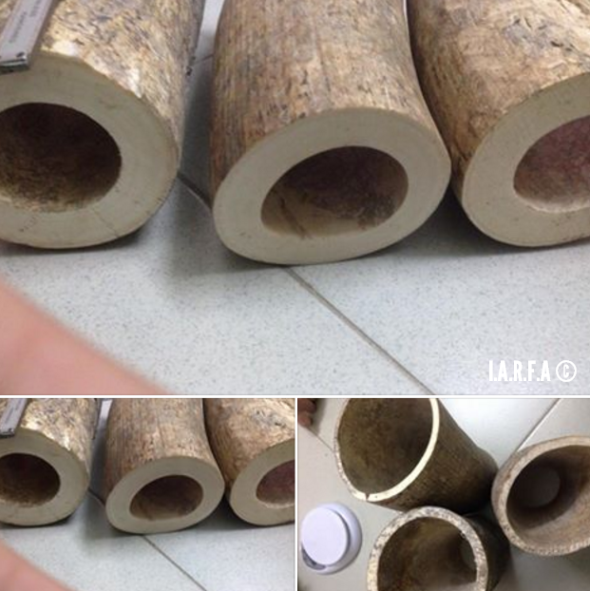
Image: One of many thousands of online Facebook ivory trading profiles.
Viet Nam banned the ‘domestic ivory trade back in 1990’. Furthermore there has been an ‘international ivory trade ban in place since 1989. Unfortunately while these bans have been in place - there are loopholes within some ‘countries domestic trades’ which permits them to trade ‘legally elephant ivory despite international and domestic bans’.
Furthermore ivory can to some extent be sold legally within Viet Nam should the products be antique or purchased before the ivory trade bans. However neither of our investigative officers have located any evidence to prove any of the ivory we’ve located was purchased/obtained legally before any bans were implemented. Damning evidence sent to law enforcement agencies around the globe also proves that ivory is being smuggled from Africa onto Japan and China then back into Viet Nam - Three countries known for their continued ivory trade violations.
While the ivory trade continues to rage out of control there are unfortunately many other illicit and illegal wildlife trades that are increasing within Viet Nam. I.A.R.F.A have noticed a very ‘alarming spike’ of bear parts, mostly moon bears for sale online and on the ground. Environmental Wildlife Crime investigative officers located this species [pictured below] - Ursus thibetanus on the 8th September 2016. The species is identified as the Ursus thibetanus and is listed as [vulnerable] on the (IUCN RED LIST) of threatened and near endangered species.
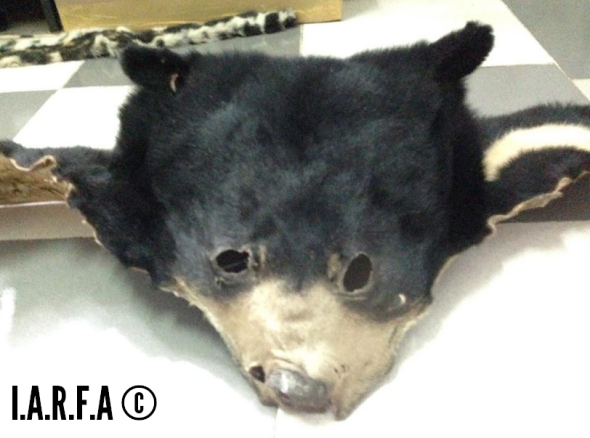
Image: Ursus thibetanus (Moon Bear parts) Viet Nam (2026).
Moon bear pelts, teeth, claws and bear bile are not exactly an uncommon species of animal to be located wihtin Viet Nam’s numerous medicinal markets, although its not common to view the species as it is above on sale within open markets. Bear bile has not decreased in sale on the TCM markets whatsoever in my humble opinion, in fact we (the organisation) hold very recent and damning evidence to prove that bear bile farming practices are sill very much operational. So damning that it does in fact bring many Non Profit Organisations into question with regards to their allegations of practically stopping this trade, when clearly its not being stopped!
Due to many counterfeit animal products on the markets, before any investigation is undertaken - Environmental Scientists will conduct routine examinations of purchased bear bile products to check their authenticity. These examinations are undertaken to store and maintain evidence files, to secure closures of illegal markets or, for further secondary investigations. I.A.R.F.A Wildlife Trade investigative officers located the following bear bile products on the market in Viet Nam.
A kilogram of farmed bear bile might cost $240, while the same amount from a wild bear could cost $15,730. Investigative officers were told the bile seen hereto in the image below was from wild bears, however we highly doubt it due to the lack of Asiatic black bears in the wild. Each bottle below was offered to investigative officers for just over $200(USD). I.A.R.F.A Wildlife Trade investigate officers did purchase three at a price of $600(USD) which is considered cheap. The ‘liquid was tested at the Nong Lam University of which proved to be 100% bear bile.
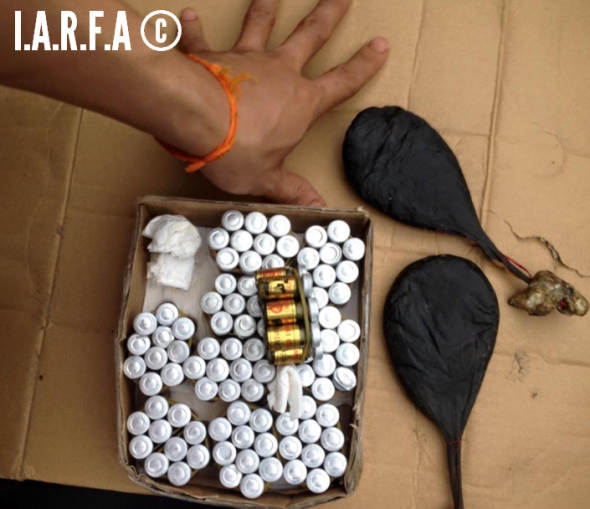
Image: Asiatic Moon bear bile in mass production with gall bladders.
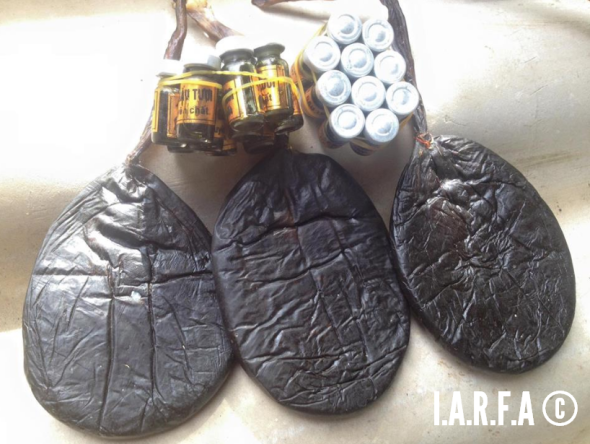
Image: Plastic wrapped gall bladders and bile.
Bear bile does not whatsoever hold any medicinal properties whatsoever, if anything consuming bear bile can actually increase health complaints. The barbaric practice is ‘illegal in China and Viet Nam’, Viet Nam banned bile production back in 1992, sadly the trade still goes on to some extent. Fortunately Viet Nam have stated they’ll be eliminating this horror come 2020, however we’re not holding our breaths just yet.
Mr Nheo who is aged around 21 years of age from the Huong District, living in Hanoi Viet Nam (pictured below) if you’re reading my friend you may want to stop trading pangolins, tiger parts, bear bile, tiger teeth, bear teeth and claws and ivory today. Bear bile hosts no medicinal properties whatsoever so why you’re trading this vile product - which leads to the destruction of bears for we don’t know..
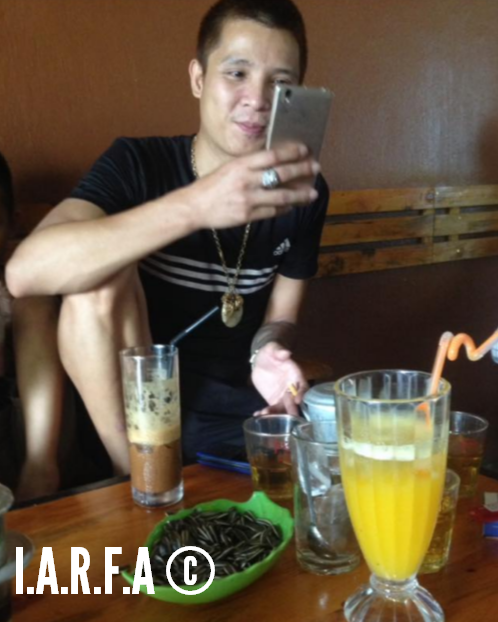
Image: Mr Nheo - Illegal wildlife trader from Hunong District, Viet Nam.
At the last Conference of Parties Summit (CoP15 - Thailand), Viet Nam made a promise to crack down on the countries illegal wildlife trade back in 2013. Although there was no actual deal made, Cites signatories did categorically state that should Viet Nam want any say in the ‘legalized international trade of rhino horn’ the country must clamp down on illegal wildlife trades and markets. I was at the last CoP summit of which Viet Nam agreed it was time to reduce their illegal trade markets - or face the consequences.
The whole purpose of this article and many others is to ‘highlight Viet Nam’s lies; the country hasn’t in my opinion made any progress to reduce their illegal wildlife markets, especially that of (critically endangered species). Yet Viet Nam has been identified as one of the leading countries to be approaching Cites for the ban to be lifted relating to the (international rhino horn trade). I ask myself daily - how is it possible for a country to control any legal trade if they cannot control the illegal trade of wildlife contraband?.
I.A.R.F.A. Environmental Crimes officers working online and on the ground furthermore have noticed a colossal spike in the number of tiger parts and dead tiger carcasses sold within Viet Nam’s illegal wildlife trade markets. The image below depicts a trader that is privately trading tiger teeth. While the quantity of tiger teeth wihtin the image (below) may seem small. I.A.R.F.A Environmental Cyber Crimes officers have been carefully monitoring this trader for well over a year. The vast amount of tiger parts he’s trading is out of this world.
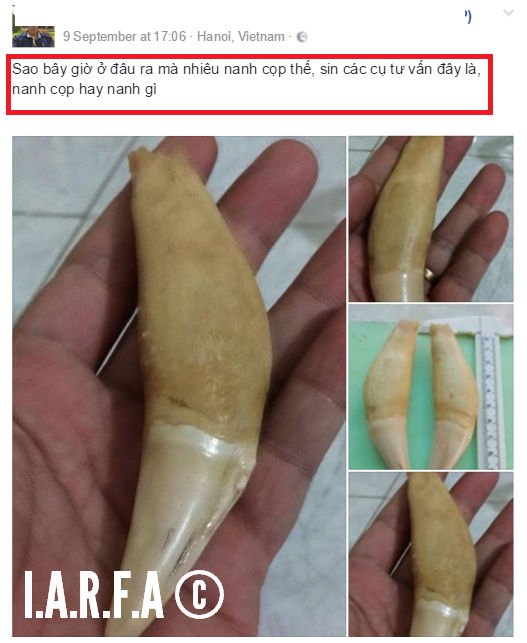
Image: Tiger teeth for sale- Online Secret Wildlife Trading Forum.
I.A.R.F.A have reported various tiger traders in Viet Nam to INTERPOL and local enforcement agencies. However as explained these bloody sickening traders, traffickers and animal killers continue to pop up time again. Most if not all the tigers that we are locating for trade (illegally) were ether captive tigers, smuggled tigers/parts from China and/or Thailand. While other specimens have actually originated from (pathology/veterinary universities inside of Viet Nam).
Three months ago I.A.R.F.A working with overseas enforcement experts concluded - the rare Asiatic leopard we located within a wildlife traders apartment had originated from a veterinary university in Viet Nam. Meanwhile the tiger skins/parts below have originated from Thailand. The question is though from where, who is supplying this amount of tigers and parts to traders within Viet Nam?
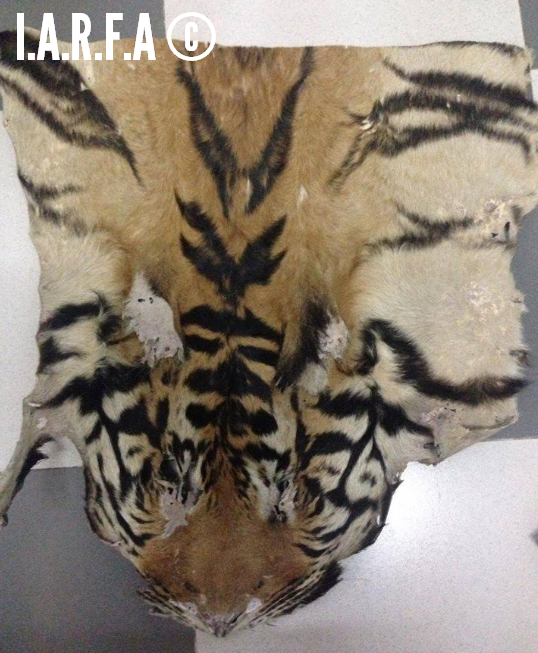
Image: One of many tiger skins offered to I.A.R.F.A investigators September 8th.
International Animal Rescue Foundation Environmental Cyber Crimes Officers was offered this tiger pelt for $1,060(USD). The trader that operates under the name of ‘Mr Coivodich’ also deals in ivory, threatened Rhinoceros hornbills, and bear bile. Furthermore we have been monitoring a very ‘concerning trend relating to tiger skin wallets. Captive bred tigers are slaughtered of which their skins are turned into wallets - a craze that is now becoming incredibly popular throughout Viet Nam. Tigers in Viet Nam are supposed to be bred for conservation purposes only. Clearly though from the images below this is not the case.
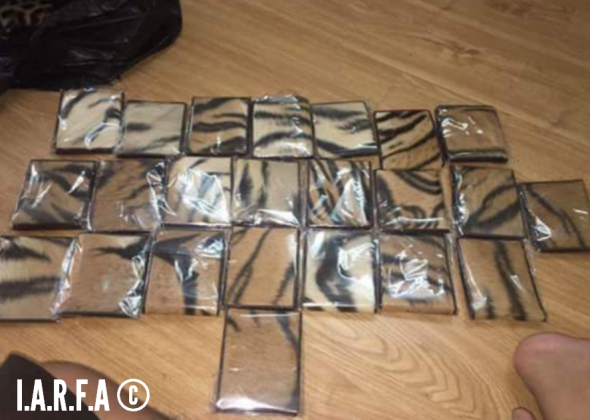
Image: Real tiger skin wallets packaged and ready for sale in Hanoi.
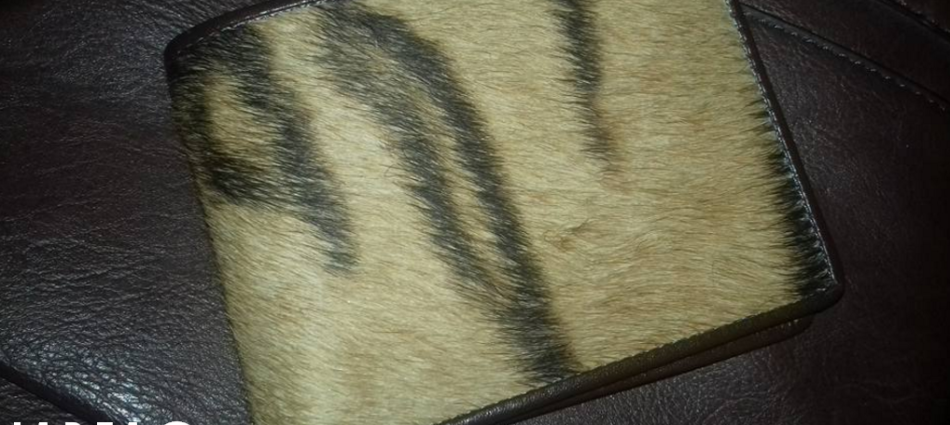
Image: Unpacked real tiger skin wallet, priced at $70.00(USD) each.
As explained tigers are supposed to be used for conservation purposes only. However we have located worrying evidence that makes Tiger Temple look more like a walk in the park. A famous Thailand Actor below is seen cuddling a drugged tiger at the Sriracha Tiger Zoo which we believed was a zoo inside of Viet Nam. (See image below). Unfortunately the tiger and this image eventually led back to Thailand, of which this zoo has been named as a horror ground. Would it be wise to assume that tigers are originating from this zoo and ending up within Viet Nam’s wildlife trade? We don’t know. What we do know for sure though is this zoo is now under close scrutiny.
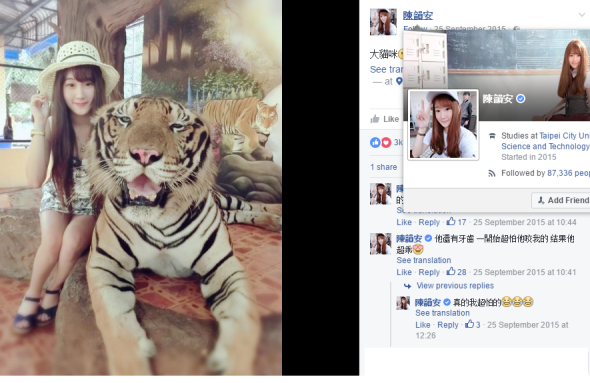
Image: Chen Yunan coaxes drugged tiger in Thailand.
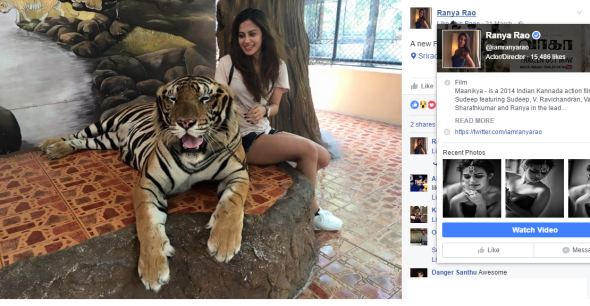
Image: Ranya Rao coaxing drugged tiger in Thailand.
International Animal Rescue Foundation’s Environmental Crimes teams have been working on our new anti wildlife trade project since 2015 being now the ninth major project that we have conducted in the past three years. Most of the evidence we are locating in relation to wildlife trade violations isn’t always within China - a lot of these violations are in fact within Viet Nam.
We are now under four days away from the next Conference of Parties (CoP17) to be held within South Africa, Johannesburg. CoP 17 has been set to be the largest summit held, and as such we may see countries such as Viet Nam asking Cites signatories to agree to a lift of the international trade ban in Rhinoceros horn. Every article that we’ve published in relation to Viet Nam shows the country cannot be trusted with relation to the international rhino horn trade. Every article we’ve published also shows numerous violations of local and international wildlife trade laws.
So the question remains. Is it now time to implement at CoP17 full part of full sanctions against Viet Nam to protect our local and international wildlife? I believe its now time. The evidence in front of you clearly shows Viet Nam’s refusal to act on their illegal wildlife trade markets. So how much more do we have to put up with before everything is eventually gone? Should Cites signatories lift the rhino horn trade ban we’ll keep to our promise. Being all those we know dealing in illegal wildlife products at high end market level will be named, shamed addresses published and that evidence released to the public. Video recordings, audio, images - everything.
The balls now in Cites court - Don’t underestimate us, we may be quiet - but we’ll stay quiet for only a short time before we begin naming and shaming.
Dr Jose C. Depre. PhD. MEnvSc. BSc(Hons) Botany, PhD(NeuroSci) D.V.M.
Environmental, Botanical & Human Scientist.
Endangered Species Friday | Bubalus mindorensis | Asia’s Next Extinction!
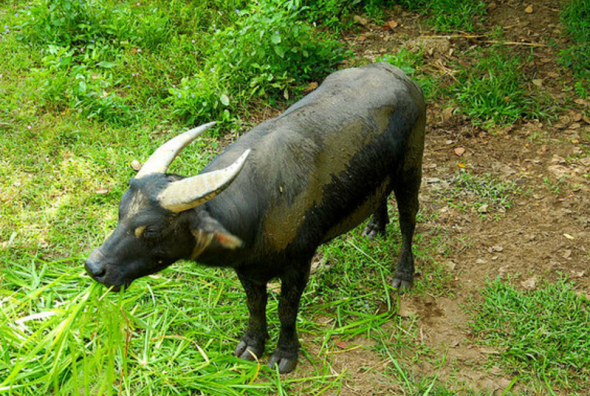
Endangered Species Friday | Bubalus mindorensis
This Friday’s (ESP) Endangered Species Post, I’m touching on a very undocumented species of buffalo that is so endangered - its extremely likely the species will go extinct within the next ten years maximum. (Photographer unidentified).
Listed as (critically endangered) the species was primarily identified back in 1888 by French born Dr Pierre Marie Heude (25 June 1836 – 3 January 1902) whom was a French Jesuit missionary and zoologist. Born at Fougères in the Department of Ille-et-Vilaine, Heude became a Jesuit in 1856 and was ordained to the priesthood in 1867. He went to China in 1868. During the following years, he devoted all his time and energy to the studies of the natural history of Eastern Asia, traveling widely in China and other parts of Eastern Asia.
Endemic to the Philippines B. mindorensis first came to the attention of environmentalists when conservationists began studying the Mindoro Water Buffalo in the early 1940’s of which they found insufficient data relating to the species. Unfortunately from 1986-1996 the species was then suddenly re-listed as (endangered).
Yet the Tamaraw had been known to overseas and native conservation scientists for over THIRTY YEARS of which today we’re now seeing a possible new extinction occurring within the Philippines. How is this possible, when scientists knew about the status of the species, why hasn’t a single zoo removed small populations to house in protective breeding captivity for later reintroduction into the same habitat, or new pastures?
Meanwhile from the year 2000 to 2008 the species was again (re-listed from endangered to critically endangered). Today the Tamaraw is now bordering complete extinction within the wild, and from what we know there is ‘possibly’ no protective captivity projects anywhere around the globe to preserve the species for future reintroduction in the wild. We do hope that we’re wrong?
From what we know based on the last census from 2013 (three years ago) there was noted within the wild only 105 mature individuals remaining. This equates to exactly 105-210 mature individuals (estimate). Within the past three years its very likely we have probably lost half of the remaining populations known, which could mean there is only 52-205 mature individuals remaining within the wild to date.
The species is not known to be fragmented, however populations are still declining. The major threat was once identified as hunting, although ‘allegedly’ isn’t known to be a threat now?. As a scientist and environmental crime CEO I find this very difficult to comprehend, due to the amount of horned ungulates which are being located throughout South East Asia. I must state though: my environmental crimes officers as yet haven’t located any Tamaraw horns or trophy heads.
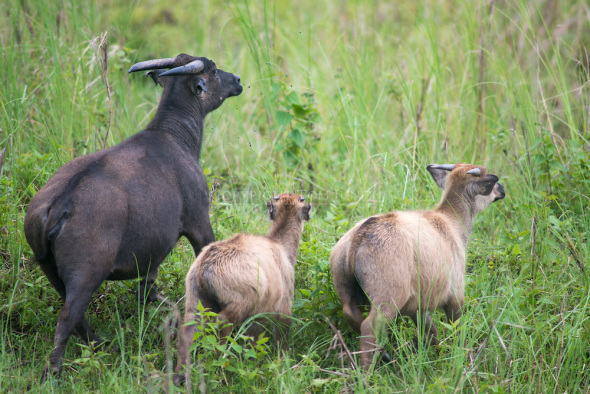
Image: Tamaraw. Credits: Ruisu Fang.
Formerly, Tamaraw were found across the whole of Mindoro from sea level to the high peaks (to over 1,800 m), inhabiting open grassland or forest glades, thick bamboo-jungle, marshy river valleys, and low to mid-elevation forests. The species is currently confined to a few remote areas over 200 m, and is most often recorded in secondary forest and mixed forest/grassland.
Tamaraw are largely solitary, although females occur with offspring. Males and females occasionally associate temporarily throughout the year, which is similar to other bovines species, such as African buffalo, banteng and gaur. The solitary nature of the species is probably an adaptation to forest habitats, where large groups would prove to be a hindrance. Tamaraw feed primarily on grasses, as well as young bamboo shoots, in open grasslands, resting within tall grasses or dense forest. Although formerly diurnal, Tamaraw have become largely nocturnal due to human encroachment and disturbance.
“WE’RE LOSING THEM, AND FAST”
I do find it quite disheartening to know that the Philippines “national animal symbol” isn’t really being preserved or even protected from nearing complete extinction, although there are some projects out there that are helping to save the species from extinction, the problem is of course, as usual, funding!. One would think that a country that’s so wealthy, and a country that has introduced so many animal, wildlife and environmental laws would at least be fighting to protect the tamaraw. From what I have read and heard from the locals - they are trying their utmost hardest, unfortunately not everyone thinks the same as many kind Filipinos.
THREATS
The main current threat to the Tamaraw is habitat loss due to farming by resettled and local people, with a high human population growth rates in and around its remaining habitat. In some areas, fires set for agriculture are a threat to the species’ habitat. Cattle ranching and farming activities pose a number of threats, including the risk of diseases spreading to the Tamaraw from livestock and burning of pastures leading to a reduced number of palatable grass species.
Historically, Tamaraw were hunted for both subsistence and sport, which led to a period of drastic decline in numbers of individuals and populations. Hunting was carefully regulated prior to World War II, but since then a growing human population, logging operations, ranching, and widespread availability of firearms on Mindoro have caused a dramatic decline in numbers.
Since the 1980s, sport hunting has reduced due to a decline in the Tamaraw population, closure of nearby ranches, and more intensive patrolling and awareness activities since the establishment of the protected area. International trade in this species or its derivatives has not been reported. Although protected by law, the illegal capture and killing of this species continues.
While its currently “illegal to poach or hunt” the species “we believe some are still being poached within the Philippines to provide horns to both China and Viet Nam”. As yet there is NO EVIDENCE to back these claims up, however I.A.R.F.A environmental crimes officers have located in Viet Nam a lot of ‘counterfeit Rhinoceros horn’, which when analysed, has proven to us the horn[s] most certainly aren’t from rhinos, but from a buffalo species. So this area of the counterfeit rhino horn trade still needs intensive investigation.
The current plight of the tamaraw is not looking good, and from our own investigations and third party environmental investigations relating to the species - extinction is very likely to occur in around five to ten years (if that).
“THE TAMARAW IS ASIA’S NEXT EXTINCTION”
Thank you for reading.
Dr Jose Carlos Depre. PhD. MEnvSc. BSc(Hons) Botany, PhD(NeuroSci) D.V.M.
Environmental, Botanical & Human Scientist.
FACEBOOK: TIGER PARTS TRADE | HORROR IN VIET NAM | PART II
TIGER TRADE | VIET NAM
The images your about to view in this article have all originated from an ongoing investigation into the illicit animal parts trade online and on the ground in South East Asia. My name is Dr Jose C. Depre, for some five years now my environmental and animal crimes investigation company has continued to delve deeper and deeper into the murky world of the illegal animals parts trade. (Image: IARFA Evidence image Tiger pelt, Thái Hõa, Nghệ An, Viet Nam)
Back in January of 2015 we began the forth phase of #OperationTrojanHorse focusing our attention mainly on Viet Nam, the operation that was launched is #OperationStopIt. Operation Stop It is fronted by numerous men and women from all over the globe that operate under myself the Chief Environmental Officer. We run two units that focus on ground level wildlife crime, and online wildlife crime. We’ve been investigating wildlife crime now since 2000 focusing on the bush meat trade, deforestation, chemical, and animal parts trade (among others).
Since June of 2015 when we began noticing a large number of traders dealing in tiger bone glue (alleged to be mostly fake), tiger claws and teeth, with various pelts and skulls. I then asked three wildlife trade investigators to work alongside me to dig deep into the murky world of the tiger parts trade. This area of the investigation focuses specifically on the ground and online trade of tiger parts. However we’re now looking into the online Facebook trade, an investigation that is uncovering “worrying evidence and corruption at governmental, police and zoo level”.
Its estimated (Cites and Traffic 2014) that there are some 6,100 “captive bred tigers” in Viet Nam, Laos, China and Thailand, furthermore since 1991-1993 the tiger trade has been officially banned within Viet Nam, unfortunately as one can see within the images herein, the trade still continues, although we “suspect these tigers are mostly captive”. Back in 1975 tigers were listed on Cites Appendix 1 (meaning that all trade in tigers domestically and internationally is now banned).
The problem we are currently finding within Viet Nam, as well as the loopholes within the current Cites laws, is that pretty much anyone in Viet Nam can apply for a permit to house tigers, so as long as them tigers are used for “conservation efforts only”. Cites laws do state that under no circumstances must any captive bred/reared tiger be killed or any part of any tiger used for trade.
However we must also remember that Cites is not a law agency, but more an organisation of parties from around the world that sets out laws; from there its down to that individual countries “policing agencies and that specific Cites department (in this case Cites Viet Nam)” to ensure laws are enforced. External Affairs Environmental Crimes Officers have though located numerous “corrupt Cites Viet Nam officers” of which I will be writing about soon.
As explained in (Article 1 - Facebook and the ivory trade); Facebook has become quite an easy platform for just about anyone to trade whatever they like (legally and illegally). Sadly in this case since June 2015 on-wards IARFA Environmental Crimes Officers have located staggering amounts of tigers and wildcat trade on the United States Facebook platform - all of which is 100% illegal, little of which from what we are locating is even under investigation from local and/or international trafficking and trade agencies.
The images below form part of a Vietnamese nation wide investigation that has uncovered corruption at Cites level, evidence that proves zoos are providing smugglers and traders with tiger and wild cat cubs and parts, and what we suspect is a legal trade of tigers from Africa into Viet Nam from which them tigers (bred in South Africa) “we suspect” are being used to fuel the massive tiger parts trade in Viet Nam. I will be documenting more on the “African connection later in the year”.
Image: Vietnamese trader calls posts freshly killed tigers with price. Buyer must collect.
The image at the top of this article depicting the tiger pelt rug is from the same individual in Thai Hoa, Nghe An, Viet Nam. He states in the Facebook posting “now ready to collect”. On viewing the messages underneath its quite clear that a price was already arranged privately within private Facebook messages, again no images of the traders face is available, nor any other identification as to what the name of this individual is. This is though normal, most traders operating illegally online or at ground go under various aliases, and rarely show their face, or use their real name. The trade is so secret locating tiger traders is actually considered rare, although once you uncover a large number of networks, follow them traces you do eventually locate numerous individuals trading in secret.
Image: Same trader, same tiger, all traded illegally on Facebook.
While Facebook has suggested they may be implementing new terms and applications to immediately ban such traders from their platform, we highly doubt whatever changes they do make will make any difference. For example users have the opportunity to create “secret Facebook buy and sell groups” or just “non-buy and sell Facebook groups”.
Once the group is set to private, only those within that group are able to report to Facebook or notify the police. So its a case of us then using our brains, technology and other applications to find these individuals. Once located all data is collected and then passed on. We don’t continue to monitor the groups or afterwards, as that is no longer our job. We’re not paid to police the web, or asked to. We do it though to help enforcement agencies, and to break the back of wildlife criminals.
We (the organisation) do highly suggest that you notify ourselves or the local police before Facebook so that evidence can be obtained before the account is “suspended” and not terminated. Once the account is suspended we, or any enforcement agency can then apply for a court order to seize any remaining evidence. Facebook hosts over 1.32 (billion) users and growing, so we find it highly unlikely any application implemented by Facebook is going to have much effect to those illegally trading animal parts. We’re talking about a platform that hosts 1% of the globes population! Hardly easy to police.
Image: Tiger trader shows one of any carcasses to buyers, Viet Nam.
Viet Nam banned hunting of tigers back in the 1970’s; had they not banned hunting (aka poaching), all of Viet Nam’s tigers would now be extinct. Today there is a total of 30 Vietnamese critically endangered tigers remaining in the wild of Viet Nam that are literally on a life thread. So with hunting banned, and trade of tigers and their derivatives banned has it stopped the tiger trade? Unfortunately no, and its very unlikely we’ll see the trade stopped until everyone pulls together and works together to stop wildlife crime dead in its tracks, easier said than done though!
Image: Vietnamese trader opens freezer up to reveal more horrors.
Image: Asiatic leopard we “suspect has been removed from a zoo and killed”.
The image above does raise some concerns as to where exactly this individual obtained this Asiatic leopard from. Asian leopards are not common within Viet Nam, although they do allegedly exist (in the country which I highly doubt). This is the first time we’ve come across an Asian leopard of which are considered “extremely rare” within Asia. We do suspect that the leopard may have originated from a nearby zoo, or the animal has been killed further east outside of Viet Nam, then smuggled into Viet Nam. The trader again states that the carcasses are ready to pick up, a price has obviously been made within a private communication which we can see in the comments section. This leopard may have originated from South Africa as a cub, if proven to be true it yet again blows a large hole in the so called “petting and breeding trade in South Africa”.
Image: Poached clouded leopards for sale on Facebook in Viet Nam.
IARFA Environmental Wildlife Crime Officers have been locating a large number of clouded leopard cubs for sale on Facebook. Most of which are dead, or normally its the skins that are traded. Both species in the genera of clouded leopards are considered “threatened” and nearing extinction within a number of Asian countries. Its unsure what these small cats will be used for, however back in December 2015 we located smaller tiger and leopard cubs that were being mixed with whole Asian and African pangolins. They were placed into what we now know was a type of Asian marinade, prepared and cooked some days later.
Image: Young tiger cub, seems to have been rolled up into bag then transported.
The evidence above was located by Environmental Cyber Crimes Officers from the IARFA. This particular trader has shot up on our radar because he has direct connections to (an unidentified South African game breeder and hunter). The Viet Nam citizen that we cannot name for enforcement reasons only recently visited South Africa to hunt a lion. Furthermore not only did the individual bring back with him a lion skin (pictured below), he also flew back from South Africa with a large number of lion bones. Again why was he allowed to leave South Africa with them bones for, and how on earth did he smuggle them out of South Africa, which its believed not to be a criminal activity.
Image: The Vietnamese trader recently visited South Africa to hunt a lion.
Image: Same trader found trading pangolin scales in the same secret Facebook group in Viet Nam.
IARFA Environmental Crimes Officers have been following this traders movements for some weeks now, although this week was when we eventually located yet more evidence of his seedy criminal network involving big cats. The Facebook group that specializes specifically in trading “tiger parts” also trades a very large number of tiger claws, tiger teeth, tiger skulls, tiger testicles, and tiger pelts. The image below depicts what were up against.
Image: Secret Facebook buy and sell groups protect Asian traders (so they believe).
The image above is just one of five images out of a staggering 14,562 images all depicting tiger traders, bear part traders, rhino horn and ivory traders and finally pangolin traders. In total there is just in this group alone a staggering 8,000+ individuals ranging mostly from Viet Nam, South Korea, China, Thailand and Laos. The Facebook group was established some 2-3 years ago from what we have seen.
Furthermore while we’d really love to report this group and have it shut down, its not that simple. Within this group alone contains evidence of wildlife trade that spans the globe from Asia to Africa, and Europe to America. One user only has to log into this group of which they are then in touch with a highly active, and sophisticated network of traders operating locally and internationally. Now do you see what we’re up against? I the CEO have long suspected since early 2006 that trade patterns were either changing, or poaching was indeed decreasing to some levels. On my travels to South East Asia I had noticed that there were fewer and fewer traders operating on ground level.
Yet poaching rates of tigers, elephants, pangolins Etc was still increasing with some reports of poaching decreasing. Many NGO’s pointed out they were winning the war on poaching, yet couldn’t explain why populations of many “trade animals” were not increasing within their endemic wild. Well here is just a small snippet of that change in trade patterns, poaching is most certainly still ongoing, and increasing, trade is still increasing furthermore - and under no circumstances are we winning the war on poaching locally and internationally. Why? We’re not winning it because technology has mostly played a pivotal role in now concealing trades and traders I.e online.
To date we have located exactly 203 active illegal wildlife groups online (in Viet Nam alone), some of them groups have direct connections to what was once “large wildlife trade markets at ground level”, in a sense what were seeing here is alike to the change in industrial markets in the west. They (the traders) now find it more easier and cheaper to trade goods online, and this is what we are seeing in Asia, with very little in the way of enforcement or monitoring. Facebook has become the new hotbed wildlife trade market place, its big and growing by the week. Furthermore most of these traders are using fake names, and code words to conceal their tracks and trade.
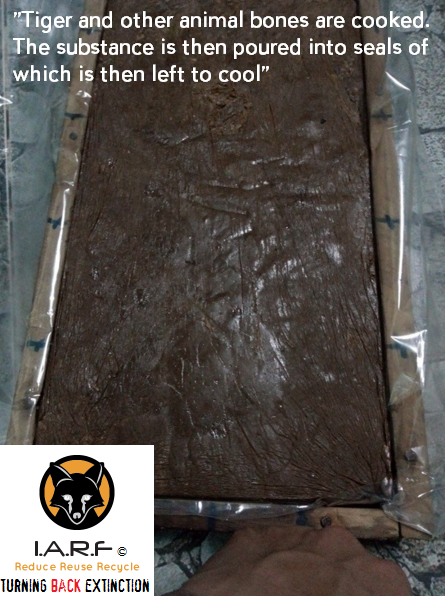
Image: Tiger bone glue, please click on the link in the image for information.
Tiger bone glue was said to be the most expensive wildlife product on the black market. Mixed with a wide number of synthetic drugs to cure so called illnesses and to act as a narcotic, environmentalists did state the glue is now mostly fake and hard to obtain due to the decreasing tiger numbers in the wild. Unfortunately with so many tigers still being bred in captivity within Asia - tiger bone glue is still available, priced higher than rhino horn and ivory.
The tiger trade is unique when compared to the illegal trade of other wildlife in Viet Nam, due to the relative rarity and high value of the commodity. This often results in traders taking extra measures to assure secrecy in their dealings (although that is something to be seen on Facebook). Viet Nam’s illicit tiger trade is carried out by elaborate criminal networks that avoid detection through the use of disposable cell phones, connections across international borders, and using friends in high places to facilitate a smooth and steady flow of their product to the consumer.
Most tigers confiscated in Viet Nam originate from foreign sources, smuggled into Viet Nam from Laos and Thailand where major farming operations exist that both produce and launder animals from the wild. A number of key figures behind the tiger trade in Viet Nam have been identified but manage to avoid prosecution by distancing themselves from criminal activities or operating under protection of local officials. Prosecutions tend to target low-level figures involved in transport or brokering sales. Only a minute few of these prosecutions result in prison time for anyone involved. (Source ENV Viet Nam).
While we would like to believe that most tigers are originating from over the borders there is also as explained zoos that are not being monitored, are breeding tigers, then selling them tigers onto traders. Finally we also have what we suspect is a number of African petting and breeding farmers involved in this trade that continues to flout legal loopholes in the law.
The wildlife trade on Facebook must come to an end. Please sign the petition hereto:
http://www.thepetitionsite.com/645/521/701/facebook-remove-illegal-pet-and-wildlife-traders-from-your-server/
Thank you for reading.
Dr Jose C. Depre
Chief Environmental Officer.
FACEBOOK: IVORY TRADE OFF THE SCALE | VIET NAM | PART I
FACEBOOK | IVORY TRADE IN VIET NAM
Written by Dr Jose C. Depre (Chief Environmental Officer).
By the time it takes me to finish this document an estimated 20-50 elephants will have been slaughtered. Once you turn your head and continue to do nothing, come tomorrow 100 elephants would have been killed for their ivory to supply the South East Asian black market. Back in January 2015 I launched yet another online and ground intelligence gathering operation relating to the illegal wildlife trade; We are focusing on China, Viet Nam, Laos, and Thailand of which the team, a twenty four strong experienced male and female unit originate from all backgrounds. Today I’m focusing more on the online trade which has now increased to worrying new levels.
Since January 2015 when [Operation Stop It] was launched Environmental Crimes Officers have found what we believe is a new trend of ivory trade in operation on the United States platform known as Facebook. External Affairs Officers became aware of the huge trade when investigating a Vietnamese national identified as Mr Trang from June 2015 to December 2015. Unfortunately since providing law enforcement agencies with masses of evidence just on this one trader; very little in the way of arrests and/or confiscations has been witnessed.
The ban on international trade in ivory was introduced in 1989 by CITES (Convention on International Trade in Endangered Species of Wild Fauna and Flora) after years of unprecedented poaching. In the 1980’s, an estimated 100,000 elephants were being killed per year and up to 80% of herds were lost in some regions. However despite the ivory trade ban in place, very little in the way of illegal trade reduction is being witnessed within Viet Nam, China, Laos, and Thailand.
Viet Nam is one country of interest that we’ve noted as hosting “unusually large amounts of (raw ivory tusks), most of which seem to be originating from impounded stocks, with other tusks clearly removed from ivory pyres”. While we are aware a large majority of ivory tusks are originating from Africa, there is also a significantly large amount also originating from Asia. Asian ivory tusks are more favored for carving over that of African elephant tusks.
Image: Two tusks located for sale on Facebook 16.05.16 from | impounded or stolen from pyres?
The two elephant ivory tusks (pictured above) were located on Facebook for sale yesterday which we suspect have originated from a recent or past ivory burn. Normally ivory tusks are white, or a dusty creamy color with some dark tinges to them; embers can clearly be seen on the left hand tusk with visible white dehydration and salt marks too.
Image: Ivory jewelry smuggled from Africa into South East Asia now on sale on Facebook.
While the online trade is no big secret, the fact is Facebook hosts no terms and conditions in place that bans such illegal trade; the Facebook platform has no systems in place to recognize such imagery (I.e raw tusks) using BOTS that can then report back to a third party Policing team. Finally IARFA Environmental Crimes Officers have found Facebook is being exploited by many South East Asian citizens primarily from Viet Nam, and Thailand peddling ivory from Asia and Africa.
Image: Ivory trader weighs up tusks he is trading online via pseudo Facebook account shops.
The image above clearly demonstrates just has serious the ivory trade has become online and on the Facebook social media platform. Traders will commonly show their products to prove their wealth (I.e as a status symbol), or to prove/demonstrate the legitimacy of their products compared to other traders, that may be selling counterfeit ivory. The trader who we can only be name as Mr Phong then demonstrates just how much he will be making come the end of the month. The total amount of ivory Mr Phong is selling on Facebook (pictured above and below) will fetch him around $15,000-$20,000USD depending on how the ivory is sold and/or manufactured.
Image: My Phong weighs up this illegal haul of ivory, fetching him some $15,000-$20,000USD
Despite international and domestic trade bans nothing is actually working, furthermore we do hold concerning evidence that shows without a doubt many tusks are being removed from compounds in Asia and Africa then sold onto the very people that police took the ivory from. Police have been witnessed trading confiscated ivory at high prices back into the hands of smugglers knowing too well they are going to make a good wage due to the high demand for ivory tusk products.
Back in 1992 Viet Nam officially outlawed the ivory trade, unfortunately since the ban was implemented any ivory that was purchased before “Viet Nam’s ivory ban” can still be sold legally so as long as the tusks host the correct certification; Fortunately CITES did rule that “re-worked ivory or any tusks/ivory products that were purchased before or after the 1992 Viet Nam ivory ban that are then re-worked, would then be classed as new ivory (non-exempt) thus making that product that was legal - now illegal.
Meanwhile back in 1975 international trade in “Asian elephant ivory” was also banned. There has been quite a few tusks examined by experts and third party experts located on the United States Facebook platform as originating from Asian elephants. Asian elephant tusks are much smaller than your average African bush elephant tusks. Come the 1980’s it was then stated no fewer than 50,000 Asian elephants existed which are now listed on CITES Appendix One and known to [endangered].
One out of every six Hanoi citizens are dealing ivory on the United States Facebook platform. Most of this ivory is as explained originating from Africa and Asia, with clear and obvious signs of trafficking, and thefts from impounded ivory and ivory pyres.
Image: One of many thousands of online ivory trading Facebook shops in Viet Nam.
The image above was picked up from one of many thousands of Viet Nam ivory traders. Traders establish a sophisticated network of “pseudo Facebook accounts”. These accounts are rarely in the real name of the trader. Traces of some accounts via the IARF Environmental Cyber Crimes Unit have shown ivory traders using Virtual Proxy Networks [VPNs] to conceal their Internet Protocol Address.
Furthermore when dealing over the phone traders normally use cheap (non-smart throw away phones) so that should enforcement agencies locate them, tracing the traders exact whereabouts, and who they are selling ivory onto is almost impossible. Its not uncommon to witness traders with a number of cell phones. One phone (the throw away one) will be used for trade and can easily be disposed of with all evidence destroyed containing names and numbers of ivory dealers and buyers. Meanwhile smugglers, traders and carvers also host a smart phone for normal everyday conversations and general surfing the web or interacting with friends and family on Facebook, Twitter or Weibo.
Back in March of 2016 International Animal Rescue Foundation’s- Environmental Crimes Officers located three Viet Nam ivory trading carving factories all advertised on the United States Facebook platform. Moreover it wasn’t just carvers and ivory advertised for sale; we also located evidence of ivory carving tools, measuring and weighing instruments and “DIY ivory carving instructions for beginners”. The carving instruments below were found in one Hanoi carving workshop (on the Facebook social media platform), meanwhile underneath the bottom image is proof of more raw ivory tusk carving.
Image: Ivory carving tools, Viet Nam, Hanoi used to intricately carve ivory.
Image: In the same carving room more raw ivory tusks were located readied for carving on Facebook.
Environmental Crime Officers have located a staggering 80,000 “ivory and wildlife trade shops” all in operation on the United States Facebook platform, yet little if anything is being done to stop this trade or even restrict traders activities. When submitting this evidence with films, images and Facebook accounts and the current laws on ivory trade to Facebook’s Security Head, Alex Stamos we we’re unfortunately ignored.
Yet Facebook’s moderation team are quite willing to remove accounts that have violated their “bullying, harassment or terrorism polices” (all of which are crimes), sadly the social media platform is unwilling to remove highly active wildlife traders breaking domestic and international wildlife laws that are making a ton daily.
On the 3rd March 2016 the BBC reported “Facebook wildlife trade prompts fears among environmentalists”. Traffic - an Environmental Crimes Investigation Organisation located hundreds of online profiles selling endangered and threatened animal species. Facebook stated “It will not hesitate in removing content that is promoting such trade”. Yet when we contacted Facebook submitting more than enough evidence relating to ivory, rhino horn, tiger and pangolin trade all accounts are still in operation.
Facebook did quote though “They are developing practical solutions to combat trade“, unfortunately these solution’s seem to aimed only at “animals rather than animal parts”. For the time being Facebook has no terms or polices in place that would remove illegal wildlife traders dabbling in rhino horn, tiger parts, pangolins, or [non-exempt] ivory. And with some 1.32+ billion Facebook users, Facebook will we believe now have a large job on their hands in combating such trade as from 2014 trade on the Facebook platform has exploded.
“Investigators are concerned that the use of social media and smartphones means that anyone interested in selling wildlife can rapidly access huge numbers of potential buyers”….
Image: More ivory Facebook shops churning out thousands of euro in ivory, all from raw re-worked tusks.
While Facebook has stated they are developing new measures and applications to combat trade, these new measures and whatever applications will be made to combat trade are all too late. Facebook is probably one of very few platforms where you can actually create “private groups”, where only those that are interested in such trade can enter and interact with other users.
Moreover Facebook provides you secrecy in relation to pages; I.e: Traders can censor which countries they don’t want to view their pages then continue trading whatever they like. In relation to pages there are ways and means around that censorship, which will not be published hereto.
One of the largest items we are seeing traded on Facebook is that of ivory bangles, ivory necklaces, ivory wrist bands, ivory chopsticks, ivory pens, ivory encrusted watches, ivory sex toys and ivory cigarette holders (in the thousands). Overseas tourists that visit Viet Nam are often caught or witnessed buying these small cheap products, and the longer they (the tourist) purchase from ivory carvers and traders, the longer demand will continue to increase and fan out. That is one area of the trade we need all be focusing on (demand) to nip in the bud sooner rather than later.
Ground Sales Survey of Ivory:
Back in 2014, a total of 1614 ground outlets were surveyed in 21 localities throughout Viet Nam. Eighty-five of these outlets (5%) were found to have a total of 2300 ivory items for sale. Buon Me Thuat city was found to have the highest percentage of shops (50%) offering ivory. However since CITES has placed more pressure onto Viet Nam to clamp down on ivory and other wildlife trade, these shops are slowly reducing trade, although we do highly suspect traders are now operating more freely on line from which policing this area of the trade is more difficult.
While it was stated that many shops on the ground had increased somewhat, law enforcement in Viet Nam has allegedly made it more difficult for traders to openly trade ivory that has no exemption. Its is for this reason we now believe Facebook is being used more and more to trade ivory products, and as one can see in the images above - we are talking massive amounts of ivory pieces and products, 90% of which hosts no certification, furthermore the vast majority of traders we’ve located are carving products from “smuggled ivory”.
It is presumed that the currency in which the price is listed or quoted in many ivory surveys may indicate the nationality of the most common buyers in that area. Both observations and questions to particular sellers substantiate the fact that ivory is sold to both “foreign tourists and Vietnamese nationals”. For example in HCMC, the majority of the ivory buyers in the two markets are assumed to be tourists from China as prices were quoted in Chinese Yuan.
Video: Bryan Christy examines the illicit ivory trade. Interesting we have also have located a number of “counterfeit tusks that are being traded online and on the ground”. Please stay tuned for article two that will delve a little deeper into both the counterfeit rhino horn, ivory and tiger part trade.
The HCMC silver and gold shops that also offered ivory (particularly the smaller, religious pendants and figurines) appear to be targeting Vietnamese buyers with prices advertised in VND. In Dak Lak and Ha Tien, the majority of the ivory buyers are assumed to be Vietnamese tourists as prices there were quoted in VND. In Ha Noi, prices were mostly given in USD when enquiries were made, which may indicate that the buyers of ivory pieces are likely to be international tourists.
While the majority of ivory is presumed to be aimed at mostly Asian tourists - there is no real hard hitting evidence that this is in deed true. For example if you was British you’re hardly going to purchase an ivory bangle in GBP, so exchanging that currency into Vietnamese dollars then places that ivory for sale (at just about everyone and anyone) with the correct currency.
It may be somewhat of a shock but the UK is the third biggest source of intercepted illegal ivory entering the United States of America (US), which has been singled out by CITES (the Convention on International Trade in Endangered Species of Wild Fauna and Flora) as a ‘problem country’ with a large domestic ivory trade likely to provoke illegal elephant poaching if not regulated and brought under control. London’s Portobello Road – the biggest antiques market in the world – has been identified as the single major source of this illegal ivory.
Furthermore while antique ivory trade is “problematic” so too is non-antique and the longer these trades persist, more and more elephants will be slaughtered for their tusks. We are growing very concerned now at the large number of ivory dealers operating on Facebook. There is clear evidence that much of this ivory is originating from both Africa and Asia, furthermore as explained - the large number of “raw tusks we are locating clearly shows that security is indeed more than questionable at ports, and pounds that hold confiscated ivory.
Image: Raw African ivory tusks, cut and sold onto Viet Nam carvers, on sale on Facebook.
Back in 2015 (just before Christmas) External Affairs Environmental Crimes Officers located an “unusual amount of raw tusks from Africa” that we suspect had made their way into Viet Nam from China. IARFEIA Officers located on the Facebook platform some 21 whole raw and non-certified elephant tusks, some of them even had blood around the bases indicating these were freshly poached ivory tusks; all of which is in violation of both domestic and international ivory trade laws.
Image: Vietnamese ivory carver aged 19 from Hanoi, Viet Nam.
The image above doesn’t really show much does it? although the other images below shows exactly what this talented young man has been creating from raw African and Asian elephant tusks (and is still creating today with his freinds - all college students). Ivory traders and dealers make no attempt at concealing their identity anymore neither. However there still remains a hardcore number of dealers that will continue to conceal their faces, names, and never post images onto Facebook that depicts them holding raw non-exempt ivory. This belief that ivory traders, peddlers, and smugglers were all but old, is now a myth. Today we’re witnessing traders and carvers as young as 16 years old, taking over from their parents thus fueling the ivory trade evermore on Facebook.
Image: Young trader named as Mr Manh exhibits his newly carved ivory pieces on Facebook.
Image:Mr Manh proudly shows one of many hundreds of ivory pens that are in great demand.
Image: Ivory pen with top off, Viet Nam, Hanoi.
Image: Ivory trader identified as Mr Trang proudly displays carved ivory on Facebook for sale.
Image: More freshly carved ivory cartridge pens on sale in Hanoi, via Facebook.
From 2015 (to date) IARFA Environmental Cyber Crimes Officers and the ground team External Affairs Environmental Crimes Officers have found that Viet Nam is “suspected” of peddling more ivory than China and Thailand. Cyber Crimes Officers are now locating every week on average of 2-3 “raw tusk dealers” operating on Facebook. Meanwhile the database of 80,000 ivory and wildlife trade dealers all operating on Facebook continues to increase by the week.
The whole purpose of this article is to wake people up, and open their eyes. We have a major problem on Facebook, and Alex Stamos Facebook Head Security Officer doesn’t seem to be taking much notice of this ongoing and rather concerning problem relating to just the ivory trade alone. We’ve not got much time left, there is an estimated 50,000 Asian elephants in Asia, and “known - some 600,000 African elephants remaining on the continent of Africa with a probable 1.2 million known but (uncounted).
Facebook has become a hotbed for the lucrative and illicit most illegal wildlife trade. And for the time being not a single thing is being done to control this trade. Please sign the petition hereto: http://www.thepetitionsite.com/645/521/701/facebook-remove-illegal-pet-and-wildlife-traders-from-your-server/
“The Extinction Clock is Ticking”
Thank you for reading.
Chief Environmental Officer, Dr Jose C. Depre.
Environmental Crimes Department.
VINPEARL SAFARI CONTROVERSY | UNFOLDING EVENTS.
VINPEARL SAFARI | CONTROVERSY
FOR THE PEOPLE OF VIET NAM | FOR THE ANIMALS OF VINPEARL
Controversy has been brewing wildly around Viet Nam’s first ever safari, where a total of either “108 or 115 animals died over the course of 1-2 months on the premises”, with a further “135 monkeys escaping from the premises”. Biologists, Environmentalists, and Journalists have all tried in vain to obtain answers from Vinpearl, and Cites Viet Nam, unfortunately neither expert has actually received, or been sent paperwork that can place speculation, and allegations at rest. Down to investigating further as to why so many animals died on the premises.
International Animal Rescue Foundation Africa was first informed about Vinpearl back in early February of this year (2016). From the start of February 2016, we were emailed, phoned and sent various social media requests from many Vietnamese and foreign citizens asking us to investigate the Safari, and to look into other concerning allegations. International Animal Rescue Foundation Africa then contacted our Asian counterparts, and began painstakingly laying out all data for us to scrutinize. The following data that can be proven to some degree as (factual), is listed below for your immediate attention, and information.
- Vinpearl imported ‘we believe some 330 animals’ from South Africa, these animals ranged from giraffe, tigers, lions, monkeys, kudu, crocodiles, impala, and wildebeest Etc. The farm located in Capetown that supplied Vinpearl belongs to Mr Huong Que, who admitted back in 2014 to illegally de-horning and trafficking two rhino horns from South Africa into Viet Nam. Mr Huong Que, strangely, hasn’t been arrested for this offence. Furthermore a Viet Nam Cites officer identified as Mr Le Hoai Nam has been friends with Mr Huong Que on Facebook since (2014) when Mr Huong Que admitted to breaking South African and international law (2014). Based on Mr Le Hoai Nam and Mr Huong Que’s online communications, they seem to know each other very well.
- From the 12th February ‘it was alleged’ many ex-pats began leaving the island of Bai Dai, Ganh Dau Phu Quoc, Kiến Giang, Vietnam in disgust due to many animals dying, and escaping at the safari. Vinpearl Safari and the media stayed completely silent. Citizens of Viet Nam and abroad quoted as many as “4000” animals dying. However since media and press have documented on the case, Vinpearl have been forced to break their silence. Vinpearl then admitted (without showing evidence in the way of paperwork), that some “105 to 108 animals did die”, with a further “135 monkeys escaping”.
- Speculation then emerged that Mr Chu Dang Khoa, his ex-wife or (ex-girlfriend), and father Mr Huong Que were involved in the shipping of animals from South Africa, Eastern Europe and Asia into Vinpearl Safari. So far, to date we can prove that Mr Huong Que, and Mr Chu Dang Khoa’s ex-partner, were most certainly involved in the shipping of many animals from South Africa. We also know that Mr Chu Dang Khoa did once live on his fathers farm in South Africa, Capetown. However as explained Mr Chu Dang Khoa still doesn’t as such fit into the main picture. We do though find it somewhat coincidental that Mr Chu Dang Khoa’s ex-partner, and his father are involved in shipping animals into Vinpearl, many of which ‘we suspect’ have unfortunately died (that originated from the African continent).
- On the 24th February 2016, Vinpearl then stated the following within a press and media article, again showing no paperwork, or evidence to back this claim up: Total animals imported with permits is 2,236 individuals. As of Feb. 19, 2016 there are 2.2004 individuals living at the zoo, 12 individuals were born at the zoo upon their arrival. Then a total of 108 individuals died.
Image: Two aircraft are identified as shipping animals from South Africa.
Points 1-4 are areas within our own environmental investigation that contain missing pieces of the jigsaw so to say. Furthermore where there is evidence of admitting criminal activity directly under the noses of a Vietnamese Cites officer I.e Mr Le Hoai Nam, then we have cause of concern.
Below are questions that we require answering, of which we have already politely asked, however been refused answers, down to our own internet protocol address banned from emailing Vinpearl. The following questions are aimed at both Cites Viet Nam, and Vinpearl.
- CITES VIET NAM: We request that all permits relating to all 2,236 animals that were ‘allegedly imported’ to be made public, communicated to us via email, or letter (which will pay the charge), or made view-able to trusted press journalists and NGO’s?
- CITES VIET NAM: We request the full veterinary reports relating to each of the alleged “108 animals that died”, the cause of death, health reports, and data that can be examined in relation to all of the alleged 108 animals health ‘prior and before entering Vinpearl Safari”?
- CITES VIET NAM: What relation does the Vietnam Cites Officer identified as Mr Le Hoai Nam have in connection with Mr Huong Que? Is this relation professional, or are the two merely friends? Furthermore when Mr Huong Que admitted to illegally de-horning and trafficking two rhino horns (front and rear), back in 2014, why didn’t the Vietnamese Cites Officer who has been friends with Mr Huong Que since 2014 pick this up, and act upon it?
- CITES VIET NAM: Where did the alleged “14 rhino come from” that has been stated in press and media as being “exchanged” from another safari of which we have since located is nothing but a construction site, with major land clearance problems? Out of the 108 animals that died, were there any rhino deaths, and if so where are these rhino carcasses now, and the horns?
- VINPEARL: We request paperwork from My Quynh Safari/Vinpearl Safari that can categorically back the claims up from Vinpearl and Cites Viet Nam relating to the 14 rhino on Vinpearls Safari. If Vinpearl did take 14 rhino from My Quynh Safari, then that paperwork will be held by Vinpearl, My Quynh Safari and Cites Viet Nam. If no paperwork is shown then we can only but continue questioning?
- VINPEARL: We request paperwork that shows all animals imported from overseas went through the correct quarantine protocols, were inspected for disease, stress, and underlying medical conditions. Furthermore we also request the name[s] of who signed the animals off that have been reported as dead as “fit to be released into a newly built safari”?
Image: Someone begins demanding posts are removed about Vinpearls alleged corruption.
A recent press article released today stated that the Cites Vietnamese Management Authority inspected Vinpearl Safari grounds, and found that no illegal activities had occurred. The following points we’ve located regarding Vinpearl Safari and the only African supplier are listed below for ones immediate attention.
- While we can take on board that some animals may suffer ill health, a newly established safari, that is professionally run, hosts expert zoologists and is owned to a multi billionaire just doesn’t see 108 animals die.
- A professionally run safari and the breeders themselves simply don’t allow some 12 pregnant animals to be transported over 10,300 kms, for some 11.5 hours. Some of the animals that have since given birth originated from South Africa, and that flight would have caused unnecessary suffering. Furthermore the medications administered could have harmed the unborn young. So its safe to say that professional and adequate veterinary checks, and surveillance were not carried out accordingly.
- How was it even possible for some 135 macaques to escape from an allegedly ‘well secured safari’? The safari states the 135 macaques were placed into larger cages for bigger primates. This now raises the concern about the so called locally transported rhino, that are penned in with what appears to be strong chicken wire.
- We don’t buy the answer that claims 108 animals simply died due to the transportation and not being able to adjust to the environment in full. These animals wouldn’t have died had the relevant veterinary checks been conducted as explained prior to shipping, and on landing.
- When Vinpearl hit the headlines throughout Viet Nam unidentified individuals were asked to remove press, media and Facebook posts. We have examined all of them posts of which not a single post actually proves animal cruelty, trafficking or wildlife trade. What the posts actually touched up on was; Inhumane transportation, animal deaths, speculation about the safari, who the suppliers were, and why some zoologists had indeed left the safari due to many animals dying, suffering disease and virus.
- Why was both Cites Viet Nam, Vinpearl, Cites South Africa and the DEA doing business with Mr Huong Que, and Mr Chu Dang Khoa? Mr Huong Que admitted to de-horning and trafficking rhino horns, and Mr Chu Dang Khoa is known to the Department of Environmental Affairs (South Africa), for dealing in rhino horns and diamonds. The DEA ‘nicknamed him as Mr Rhino Horn Billionaire’.
Image: Mr Huong Que who supplied Vinpearl admits to violating wildlife law.
While we understand that a Vietnamese Cites Management Officer has indeed paid a visit to Vinpearl claiming that everything is all above board, we ourselves want to see proof as explained above. We believe that while the main breeder that is Mr Huong, has relations to Cites Viet Nam (see image below), then corruption could be at play here relating back to the so called visit this week stating all was okay at the safari.
Image: Cites Vietnamese Officer asks Mr Que when he’ll be back home?
This article will be updated as and when. We please ask that visitors to the site stay tuned for regular updates that will be dated and timed. The whole purpose of this article is to get to the bottom of why so many animals have died, why government agencies are doing business with known criminals, corruption, dishonesty, trafficking, wildlife trade, and more. We are not going to print data that cannot be proved. Finally this article cannot be censored by the Vietnamese Government.
The people of Vietnam have a duty to know just exactly what is going on here. Its clear although not proven that people in high places are also involved here to some degree. Who are the other dealers too? Where in Europe and America did other animals come from, did Mr Rhino Horn Billionaire and ex-partner, father and others supply the entire safari, and if so what relation do they have with Viet Nams most richest man?
International Animal Rescue Foundation Africa has communicated our concerns to SAPs relating to wildlife trafficking regarding Mr Que’s de-horning of a rhino and illegally trafficking them horns back to Viet Nam. If anything this man needs to be questioned about his comment, the rhino carcass must be located (if there is one), and the farm that Mr Que owns must be investigated to satisfy our own concerns and wildlife agencies that further crimes haven’t been committed on this farm. The longer it goes ignored, the quicker evidence (if any), will be concealed. One doesn’t just admit to committing a serious wildlife crime as a joke.
Environmental Crimes Department.
Food Violations - Pet Meat Trade | Food Terrorism.
FOOD VIOLATIONS IN THE PET MEAT TRADE
One of thee biggest and most concerning problems I witness within the pet meat trade is multiple food and hygiene violations. Violations that place both human and animal life at risk of disease and in worst case scenarios - Death. Furthermore I often witness many organisations online that either disregard this critically important health risk, or seem more concerned about posting graphic images on the trade while soliciting donations, yet seemingly not bothering to educate their viewers on the “importance of these images and videos, down to how these images and videos can actually help to wipe this repulsive trade out once and for all”.
So today I have again decided to document on such violations, but am going to educate all seven million of our viewers around the world of just how serious the images depicted herein actually are. I am going to keep this document as easy reading as possible, while detailing the facts briefly but in as much detail as I can (without confusing people with scientific jargon). Below I have included a number of images within this document. The images contain small white circles that point out minor and extremely major food violations, all of which in the Western world would see such vendors and restaurants closed down immediately for placing public health at risk of contracting diseases.
FOOD VIOLATION | CROSS CONTAMINATION
Firstly I want you the reader to think - If I hadn’t of circled the most important food violations within this image below, what would you the viewer think of this image? Let me try and answer that question for you. Firstly I’d most likely be enraged that a dead feline had been slaughtered, and is now being prepared to cook to consume. And secondly, (there is no second). There is no second because my own anger, frustration and shock has overwhelmed me, of which that is all I see within this image, a dead cat, and nothing more.
I am now technically angry, and upset that someone has killed an innocent cat, and then I move onto the next image. My next thought would probably be to either leave a derogatory comment under that post, or to donate to the organisation that hasn’t shown any information or education about this image or any “graphic” pet meat trade image whatsoever.
Within the image above I have highlighted nine of the most common food violations that would be prompt any food safety inspectorate to immediately close this restaurant or vendor down within the modern western world. What are these violations? Let’s take a look.
- The window in the far left has a cracked wooden frame that bacteria would/will thrive within.
- On the right hand side of the window is mold that bacteria will grow within, that’s not forgetting the toxic spores that the mold would emit in to the ambient preparation environment thus ending up on the surrounding food itself leading to food spoilage.
- A water bottle that is possibly being used by the cook looks pretty innocent doesn’t it? Well that pretty innocent water bottle is situated next to an uncooked dead animal carcass. While the bottle may be sealed, the cook may cross contaminate that bottle with blood from the animal, simply by a single touch of his/her hand. Once the bottle is turned upside down to drink from, blood drains from that bottle into the cooks mouth which could or will see food poisoning occur from secondary cross contamination.
- The white circle in the right hand side of the image, shows an open window. While that open window may look innocent, the open window is a free entry for pests and diseases to enter into the preparation area thus spoiling the food (E.g.) flies, aphids, and parasites. Furthermore should the outside environment temperature be warmer than the inside ambient temperature, food such as meat, dairy, or cooked meats will heat up, which will see bacteria multiple on the foods spoiling them. For every twenty minutes bacteria is present, that bacteria will double in number. 1,000 bacteria = many thousands more.
- Dirty chopping boards can harbor thousands if not billions of bacteria, furthermore if this chopping board hasn’t been washed or even replaced every six months to a year, it looses its triclosan (antibacterial cover) which helps to kill off bacteria. While there is a wooden board present, that too is just as disgusting and filthy, and harboring anything from a million to a billion bacteria.
- The black bucket itself is a breeding ground for any bacteria to thrive in. The black bucket has what looks like chaff marks on of which bacteria will weed themselves out of and contaminate any food nearby.
- Vegetables that are unprepared or prepared shouldn’t be anywhere near a “raw meat preparation zone”. Vegetables and meat cooks at different temperatures, furthermore meat and vegetables require either shorter or longer periods of cooking. Salads should not under any circumstances be anywhere near “raw meat zones” whatsoever.
- Cracked tiles are the perfect breeding ground for any would be bacteria to grow. Furthermore cracked surfaces cannot be cleaned adequately which in turn leaves the area unclean. I wouldn’t even want to guess how many millions of bacteria are actually present within this single cracked tile.
- Blood and general dirty surfaces is not good food practice, and should any salad vegetables come into contact with this surface, I’d hate to think just how much bacteria the “customer” would be consuming (over that of pet meat).
The above nine food violations are commonly seen within all Asian and African unregulated food trades. These type of violations are commonly identified as (cross contamination’s). With no regulation or even monitoring of these trades, it paves the way for trillions of bacteria, diseases and virus to spawn their way into the general public’s food thus equaling food poisoning caused by human negligence.
As a human and environmental scientist I am at the best of times shocked if not perplexed at the sheer ignorance of Asian and African governments that are all up for protecting human health and safety, yet unregulated meat trades such as the above - are an imminent disaster waiting to happen on a gargantuan scale. On one end you have armed forces and police protecting people from terrorism or terrorists of which each terror atrocity kills on average 100-200 innocent civilians (Est). Yet in Asia a staggering (700,000) people die from food poisoning annually. Source: http://www.iccservices.org.uk/pdf/Food_Poisoning_Facts.pdf So I think its safe to say that food poisoning viruses are indeed the biggest threat to homeland security, something Asian and African governments seem oblivious too.
“FOOD TERRORISM KILLS 700,000 A YEAR IN ASIA ANNUALLY”
Lets leave food poisoning out of the equation now and concentrate on actual “human on human terrorism” of which in the past year terror attacks have risen by 80% in the past 365 days. Furthermore lets not forget the very (concerning 700,000 thousand innocent people), most of which are food consumers that are killed by poor food hygiene in Asia alone.
Back in 2014 the Global Terrorism Index (GTI) stated that some 32,658 people were slaughtered by terrorist attacks worldwide, totaling on average a combined 140,000 terror attacks. 2014 was marked by the (GTI) as being the largest kill rate seeing terrorist kill rates soar by some 80% in a single year from 2013-2014. Source: http://economicsandpeace.org/wp-content/uploads/2015/11/Global-Terrorism-Index-2015.pdf
The index ranks the level of terrorism in 162 countries - representing 99.5% of the world’s population - by measuring the number of attacks, injuries, deaths and property damage as a result of terror attacks. The UK ranked 28th in the index - higher than the United States, Iran and France, although the report did not include the impact of the Paris attacks in which 129 people were killed.
Terrorism remained highly concentrated in just five countries, with Iraq, Nigeria, Afghanistan, Pakistan and Syria accounting for 78% of terror-related deaths in 2014, the index found. The UK recorded the highest number of terrorist incidents of Western countries with 102 last year, although they did not result in any deaths. The majority of the attacks were in Northern Ireland and involved the New IRA, the report said.
CAN YOU SEE THE TERRORIST?
Okay, so now I am going to show you a picture below of which its very obvious what the image depicts. An armed individual that has “probably killed numerous innocent civilians”. Can you see him? Keep telling yourself, “I can see him, he’s armed and he’s certainly dangerous looking, and he’s very much within my sight”.
 CAN YOU SEE THESE TERRORISTS?
CAN YOU SEE THESE TERRORISTS?
So you can see the individual in front of you whom is holding a rifle. 2014-2015 most of the 36,000 people that were killed as a direct result of terror atrocities and/or attacks actually witnessed their aggressor before they were killed. Asian and African governments have been quoted as clamping down hard on terrorism, yet over 700,000 people a year are killed as a direct result of food terror - yet this critically important issue within the pet meat trade seems to be going ignored. 700,000 people is indeed more people killed annually than any terror attack recorded since the WWI and WWII.
In the image below what can you see? Take a good hard long look at this image. Can you see the terrorist or terrorists should I say? The answer is of course - no you cannot see them. You cannot see these terrorists or terror “suspects” as they are approximately 50 to 60 micrometers long (I.e - microbes). Lets take a look.
The image above looks pretty much innocent in the sense that there is no immediate threat whatsoever to human life. The woman to the right is not armed, and the guy to her right is going about his daily duties of food preparation. Unfortunately there are over a dozen terror suspects within this image waiting to take action on their next victim[s]. That victim could have been anyone of the 700,000 Asian citizens that consumed dog or cat meat from unhygienic premises, that poses a direct “threat to human health” in the way of “food terrorism”. So lets take a look at these non-visible, and virtually invisible terrorists.
- A dirty cooking pan hanging from a filthy brick wall. Any species of animal could have at some point took refuge on this wall. Lets say a chicken. Chickens defecate, and with chicken defecation comes germs and bacteria. Salmonella is the number one terrorist then in this situation, as salmonella can easily be passed onto humans via chicken droppings.
- An innocent (unarmed) cooking lid, looks pretty much cool, calm and collected. What’s harboring underneath that lid though, or more to the point - what has the lid been placed on? Lets say a dog has rubbed its backside up against that wall (yummy)!. What’s the likelihood of contracting a virus? High if that lid is not cleaned. and the virus is? Toxoplasma gondii is likely. The lid could be innocently placed onto or next to raw non-cooked or cooked - foods thus equaling (cross contamination).
- Dirty rags, Mmm, looks pretty much safe, and not likely to pounce or fire a quick succession of AK47 rounds off into the air. What the hell is on that rag though that’s most likely going to be used to clean pots? Flu viruses, Rhinovirus, Norovirus, E. coli, salmonella, Clostridium difficile (C. difficile) and campylobacter are all just a handful of nasty food germ terrorists that we really don’t require within our food from filthy rotten germ infested rags. Oh just for the record, Norovirus kills over 200,000 people a year. Lovely!
- Not quite sure what this is hanging down from the main food preparation area (that shouldn’t be outside). Whatever it is, its not important as such. More what has landed or took refuge on this overhanging decoration. Let’s say wild birds have visited for a brief eavesdropping, and they want to leave you a farewell present of wild-bird feces. Any food that is prepared under that overhanging decoration can become contaminated with a STAGGERING SIXTY DISEASES that you seriously do not want in your food! One of the most serious food contamination’s is that of Avian Flu that has killed many hundreds of people throughout Asia.
- Chemical contamination of food seems to be increasing within pet meat consuming countries - especially on the Asia continent. There shouldn’t be under any circumstances any form of non-food chemicals anywhere near food or within a food preparation area. Lets say this tub of unknown ingredients is “Lean Meat Powder Pork” commonly used in Asian food preparation within China. Lean Meat Powder Pork can cause - dizziness, heart palpitations, diarrhoea and profuse sweating - in worst case scenarios this substance can cause death.
- An open filthy river, again looks pretty much innocent. However any insect such as flies can simply swoop in for a mere taste of the local specialties thus spoiling food. That innocent fly could have anything on its pads from animal dung to dog feces. The most common virus a fly could leave is that of a vomiting virus. Not really what I’d call “good customer service”.
- Hairnets must always be worn within food preparation and raw meat preparation. While there is no real major food terrorist here the woman could have touched a bloodied animal carcass, then patted her hair down. That means a cross contamination of a virus of some sort. Lets say she has touched raw pork, and then goes over to inspect the local ‘cooked dog or cat meat’. She brushes her hair again, and a loose hair follicle contaminated with raw pork blood ends up in food that doesn’t require cooking or further cooking, Hepatitis E viruses, Trichinosis, and Ecoli, are three of many viruses that can end up in food causing severe and unwanted sickness, simply by not wearing a hair net.
- The guy to the innocent woman’s right is again not really looking dangerous, apart from the fact that he has no T-Shirt on or even a protective food apron which is pretty much vile and a 100% food violation within the Western world. Aprons stop anything from hair, skin cells, down to human viruses from being passed onto the food. Furthermore gloves are not being worn for the “average of twenty minutes” that would keep a barrier in between the food prep and the food. Most common types of food virus are vomiting and cold bugs.
- Improper foot-ware is not being used within a food preparation area, which could in this case pose a danger “to the food server and preparatory individual”. We know that rabies is very problematic within Asia and accounts for thousands of deaths every year. Should anyone of the (live or dead stolen pets), be infected with rabies, and the man with no proper and safe foot-ware have open wounds on his feet, he’s likely to contract the deadly rabies virus equaling death!
- And finally in at number ten, as like the young man on the floor preparing food, the woman is also wearing open toed shoes which is again a big no no within food preparation or any food service. Unwashed nails contain the natural microflora or resident bacteria and microbes and the transient bacteria from the objects that the hands come in contact with. When the hands are unwashed, there are millions and millions of bacteria living and growing on it. And you really don’t want them bacteria in your food.
CAN YOU SEE THE FOOD TERRORIST NOW?
The whole purpose of this article is to educate not discriminate. Over 700,000 people die every-year in Asia alone from food viruses, and food contamination. That’s 700,000 too many of which The Anti Pet & Bush Meat Coalition are trying to stop in relation to the virus filled dog and cat meat trade. Please sign the petition below and help by donating via the link.
Donate here:
https://www.facebook.com/Anti-Pet-and-Bush-Meat-Coalition-474749102678817/app/117708921611213/
Sign the petitions here on Facebook:
https://www.facebook.com/474749102678817/photos/pb.474749102678817.-2207520000.1452824282./554473384706388/?type=3&theater
Follow us on Facebook here:
https://www.facebook.com/Anti-Pet-and-Bush-Meat-Coalition-474749102678817/
My name is Dr Jose. C. Depre and thank you for reading.
Dr Jose C. Depre PhD. MEnvSc. BSc(Hons) Botany, PhD(NeuroSci) D.V.M.
Environmental & Human Science
Endangered Species Friday: Aceros nipalensis
Endangered Species Friday: Aceros nipalensis
This Fridays (ESP) - Endangered Species watch Post I have chosen to document on this stunning species known commonly as the Rufous-cheeked Hornbill, because of large population declines throughout most of the birds historical range. More awareness needs to be created with regards to this particular bird specie due to their natural habitat declining and localized extinctions that have already occurred in the past decade. Furthermore extinctions are now likely to occur within Viet Nam and [west] Thiland where hunting is the primary threat to the species.. (Image credit Ian Fulton).
Identified back in 1829 by Mr Brian Houghton Hodgson (1 February 1800 or more likely 1801– 23 May 1894) was a pioneer naturalist and ethnologist working in India and Nepal where he was a British Resident. He described numerous species of birds and mammals from the Himalayas, and several birds were named after him by others such as Edward Blyth.
Listed as vulnerable the A. nipalensis is endemic to Bhutan; China; India; Lao People’s Democratic Republic; Myanmar; Thailand and Viet Nam. Unfortunately A. nipalensis has already been declared extinct locally in Nepal. Like many large birds within this region of Asia the Rufous-cheeked (or necked) Hornbill’s populations are declining quite extensively throughout their range of which deforestation and habitat degradation and, hunting is primarily to blame.
The species has been listed on Cites Appendix (I-II) of which an estimated population census count has determined there are no less than 2,500 birds but no greater than 9,999. A survey count back in 2001 by Bird-Life International concluded that from the [estimate] above the [true] population count is actually by far more lower than previously suggested, however few conservationists are now debating this due to the birds ‘alleged’ extensive range within South East Asia.
From the Bird Life International (2001) census the organisation stated there was no fewer than 1,667 mature individuals but no greater than 6,666, which is rounded to 1,500 to 7,000 mature individuals exactly. Since the last 2001 census its quite possible populations have increased and decreased to date.
A. nipalensis is known to inhabit the following ranges; Bhutan, north-east India, Myanmar, southern Yunnan and south-east Tibet, China, [west] Thailand, Laos and Viet Nam. The species has declined [drastically] and is no longer common throughout most of its known historical range. While we know the species is now regionally extinct within Nepal the next likely localized extinction may very well be within Viet Nam of which its populations have fallen to alarming rates.
Within [most] of Thailand where the species was quite common reports have sadly indicated the bird is no longer commonly seen, and like Viet Nam, Thailand could become the third county to see localized extinctions occurring too, the only known habitat within Thailand that A nipalensis occurs now is within west Thailand. To date reports have confirmed that within Bhutan A. nipalensis remains pretty much common of which Bhutan is known to the birds [largest] stronghold.
Healthy large populations have also been documented back in 2007 within Namdapha National Park, India, Nakai-Nam Theun National Biodiversity Conservation Area, central Laos and perhaps also Huai Kha Khaeng, [west Thailand], and Xishuangbanna Nature Reserve, China. Some conservationists have been led to believe that while populations are considered quite large within these strongholds that the species may very well be “more widespread than previously thought”. Meanwhile the species is known to inhabit north Myanmar, and there are recent records from West Bengal and Eaglenest Wildlife Sanctuary, Arunachal Pradesh, India.
Rufous-cheeked Hornbill commonly resides within broad-leaved forest, some reports have also indicated the species to be present within dry woodland too. Mating and nesting normally occurs from the months of March to June within large wide girth trees, the very trees that the species depends on though are being felled throughout most of the Hornbills historical range.
Image: Rufous-necked-Hornbill (Photographer unknown)
Major Threats
Its dependence on large trees for feeding and nesting makes it especially susceptible to deforestation and habitat degradation through logging, shifting cultivation and clearance for agriculture. Furthermore, viable populations require vast tracts of forest to survive, exacerbating its susceptibility to habitat fragmentation. These problems are compounded by widespread hunting and trapping for food, and trade in pets and casques. Hunting is the primary threat to the species in Arunachal, India. A report from the Wildlife Extra organisation details poaching incidents with regards to Hornbills.
Wildlife Extra stated:
The unique and intriguing breeding habits that caught Pilai Poonswad attention are central to the birds’ plight. Each hornbill pair seeks out a suitable hollow – 15 to 40 metres above the ground in the trunk or branch of a Neobalanocarpus, Dipterocarpus or Syzygium tree – in which to raise a single chick. When a suitable cavity is found, the female walls herself in, using mud supplied by her mate and regurgitated food, to hatch and rear her chick. The male feeds them for the next three months and, if he fails, both mother and chick may perish. The birds consume up to 80 different kinds of fruit, scattering the seeds over many hectares of forest. With other seed-distributing animals such as monkeys now scarce, the hornbill has become pivotal in maintaining the integrity of the forest. But the birds rarely spread the seeds of the trees in which they nest: if these disappear, the hornbills too will vanish – and the trees and plants they help propagate will soon follow.
Click the link above via the [report] to read more on this very fascinating conservationist.
My name is Dr Jose Carlos Depre, MD, B.Env.Sc, BSBio, D.V.M. I myself have been working within bird, tree kangaroo and pachydermata conservation, rescue and reporting for over fifteen years.
Within these unique, wonderful and exhilarating years I have witnessed one of my favorite species of animals [birds] declining to worrying levels that is now so concerning it has led to sleepless nights for many years. Should we continue to see such catastrophic population decreases of birds we’ll eventually witness alarming declines of plants and trees. The same applies with insects and herbivorous mammals too.
Like insects birds are incredibly important for both human and animal survival. The vast majority of all bird species rely on plants for their staple diet. On consuming fruits, leaves, flowers Etc, the very seeds within the birds diet of life needed to continue seed dispersal will be lost should all bird populations go extinct. Should this occur we selfish humans will then become the Planets seed disperses. Think about that next time you fell a tree or rip a plant up.
Dr Jose. C. Depre
Environmental and Botanical Scientist.
Thank you for reading and please share fare and wide to create as much awareness for all Hornbills as possible.
Embassy Day: For Cats and Dogs in the Horrific Meat Trade.
EMBASSY DAY: 17TH SEPTEMBER 2015 WWW.SAYNOTODOGMEAT.NET
Did you know on the 17th September 2015 from 11:00am the Australian organisation www.saynotodogmeat.net, registration 49 860 343 527 will be hosting peaceful demonstrations around the globe within nine major cities? Embassy Day forms the first (governmental) lobbying in relation to #OperationUnite 2016. Embassy Day will be the organisations second largest demo since April 4th 2015. Back in April Say No To Dog Meat made history by hosting the worlds largest anti pet meat demo in over twenty five countries.
On the 4th April 2015 the Say No To Dog Meat family hit the streets internationally in their thousands marching for dogs and cats in the horrific pet meat trade. The main April protests were non-governmental, however was a reminder that should the (eight governments) the organisation are lobbying not respond to the polite requests from the Aussie organisation. The next step would be Embassy Day, September 2015. Finally after Embassy Day, the organisation will then begin gearing up for phase two of Operation Unite 2016 that will be held October 2nd and 3rd 2016. Followed up with #OperationUnite comes the new #lovefamily campaign too.
Image: (SNTDM) supporter, #lovefamily campaign.
September 17th 2015 will see demonstrators lobbying South Korean embassies within Los Angeles, United States and Ottawa, Canada. Then in New York the Indonesian embassy, followed up with the Cambodian embassy in Seattle, United States will be demonstrated. Meanwhile within the United Kingdom the Vietnamese embassy will be peacefully protested in London, followed up with the Indian consulate in Belfast, Northern Ireland. The Nigerian embassy in Johannesburg, South Africa will follow soon after. The Thailand consulate within Perth and Philippines consulate in Brisbane, Australia will be peacefully lobbied too.
Donna Armes, campaign manager and director confirmed that all embassy consulate generals and ambassadors had been sent communications months before Embassy Day was planned. Furthermore the campaign manager stated a second electronic communication had been sent and received by embassy staff informing them about the peaceful protests, and why the organisation has been forced to lobby all nine embassies. Embassy staff, consulates and ambassadors have failed to acknowledge the Aussie organisations peaceful plans which is a little frustrating but then the organisation didn’t expect a reply anyway.
Say No To Dog Meat volunteers and directors will begin the ‘peaceful demonstrations’ with an up to date speech on current and past issues in relation to both ‘Asian and African’ dog and cat meat trade outside of each embassy. After the main speech the public can stay or depart of which the organisations volunteers and directors will then be handing into the embassies all data and petitions.
Image: Nigeria, woman prepares dog carcass for [404 joint delicacy, peppered dog soup].
Each petition contains from 10,000 to 200,000 signatures. Statistics on pet meat consumption death rates, virus and disease, regulations and violations of current standing law, predictive model data research, food hygiene violations will be handed into the consulate generals and ambassadors too. Presidential letters will also feature within the pack of which each government has a set six to eight months to respond. The organisation is not expecting an immediate or even positive response, of which OPERATION UNITE will continue to go ahead come October 2016.
For the very first time in history the Indian and Nigerian embassies will be lobbied by the organisation in relation to the Indian, Nagaland and Nigerian pet meat trades. Nigeria is the largest dog meat consuming country on the continent of Africa and third largest on the planet. Furthermore deaths from consumption of diseased or rabies infested pet meat has skyrocketed this year alone with some eighty people dead already. Meanwhile the Indian Nagaland state loses on average an estimated forty people a year via the direct consumption of rabies infested dog meat. Rabies is also on the rise in both pet meat consuming zones. India is where 85% of all human rabies deaths occurred between 1995 and 2004. Over this period there were 21404 rabies deaths a year there. Death rates for 2014 are yet to be seen.
“About 3.5 million dog bites are registered every year in India. The Government cannot give vaccine free of cost to all people. From 2006, the price of vaccine has increased…”
Despite many protests against the South Korean Bok Nal pet meat trade that began in June and ended in the first week of August. The South Korean government took no notice of expert knowledge, scientific data or petitions handed to them. Instead they allowed traders to continue the horrific disease riddled trade, and took little notice of their own laws and guidelines implemented to protect dogs and cats in meat trade. Dare we ask what the point is in introducing animal protection laws, just to allow native citizens to continue violating them?
From 2013-2015 Say No To Dog Meat has vainly lobbied the Viet Nam health minister and president Trương Tấn Sang to bring an end to the pet meat trade. On the 19th August 2014 reports issued by the (World Health Organisation) confirmed that deaths rates had increased slightly to forty (per year), however its estimated that some one hundred people die annually from rabies infection.
Despite the Aussie organisation sending more than enough scientific evidence to the Vietnamese health minister and president the trade continues. From 1995-2004 the then death rate from rabies in Viet Nam stood at some 1,550. Since 2004 the Vietnamese pet meat trade has increased. Death rates continue to increase within the country from the direct consumption of diseased pet meat, statistics from 2014 showed many of these deaths were infant related either bitten by dogs on private land or from consuming rabied infected dog and cat meat.
March 16th 2009 the Vietnamese government were handed third party data from; National Institute of Infectious and Tropical Diseases and the National Institute of Hygiene and Epidemiology in Hanoi, Viet Nam that stated; “Most Rabies deaths in Vietnam were from the direct Butchering and eating of either dog or cat meat”.
Vietnamese researchers confirmed;
“In Viet Nam, dogs with rabies have been detected in dog slaughterhouses and workers at dog slaughterhouses are vaccinated against rabies as part of the national programme for rabies control and prevention. However, the private slaughter of dogs is relatively common in the country which increases rabies infection rates”
“Vietnamese doctors already consider dog slaughtering to be a risk factor for rabies transmission, but it is important that other health care workers and policy makers, both in- and outside Vietnam, are aware of this risk factor”
Dog and cat meat trade is now finally illegal within Thailand, unfortunately this doesn’t stop traffickers from snatching dogs and transporting from Thailand into the Viet Nam. Yes the trade may indeed be illegal, but again our own investigative journalists have located street traders openly selling and smuggling unhygienic meat in rural communities.
Back in 2013 [Life With Dogs] stated; “In the past week, Cambodia, Laos, Thailand and Vietnam have signed a deal with the intention of ending the importation and sale of dogs to be used as food. This move was initiated by their governments because of the involvement of animal welfare group Asia Canine Protection Alliance. The ACPA is comprised of four notable animal groups: Animals Asia, Change for Animals Foundation, Humane Society International and Soi Dog Foundation.
We are now in 2015 and as yet [SpeakupFortheVoiceless] and [SayNoToDogMeat] have yet to witness any such decrease of trade within Cambodia, Vietnam and Laos. Trafficking and snatching of pet dogs and cats continues within Thailand feeding the trade within the Viet Nam and China. Why has it taken from 2013 to do nothing? One only has to walk the streets of Hanoi, Saigon, Hoi An and Ben Tre to witness dog meat traders more than active. On June 30 2015, police from Sakol Nakorn intercepted a truck carrying the butchered remains and carcasses of more than 100 dogs. The truck was heading for Tha Rae, [the traditional home of Thailand’s dog meat trade]. Yet trade is illegal!
Within the Philippines the government has introduced tough and stringent laws with regards to pet meat traffickers and peddlers (Please click the links to view current data from government). Say No To Dog Meat recognizes the Philippines as one of few Asiatic countries on the continent that has taken the pet meat trade seriously. Despite a law banning the killing and maltreatment of dogs (Animal Welfare Act of 1998), dog-eating and the industry that supplies it continues particularly in the northern part of the country. Back in June 23 2013, some 12 dogs were rescued in San Pedro Laguna, according to the Department of Agriculture (DA).
The Philippines government aims to eliminate the country’s dog meat trade by 2016, AKF Head and Legal Counsel Heidi Caguioa told Rappler [2014]. Eradication means no more dog meat traders and no more dog meat restaurants. Say No To Dog Meat will be lobbying the Philippines embassy within Brisbane, Australia calling on the government to strengthen the current Animal Welfare Act 1998 and Rabies Act 9482.
Finally Say No To Dog Meat volunteers will be lobbying the Indonesian embassy calling on the government to enact law and close down all known dog meat markets. The Indonesian dog meat trade is allegedly associated with the Minahasa culture of northern Sulawesi, Maluku culture and the Bataks of northern Sumatra, where dog meat is considered a festive dish, usually reserved for occasions such as weddings and Christmas. While Say No To Dog Meat and our comrades Animal Defenders Indonesia, Surabaya Tanpa Dog Meat, Bali Adoption and Rehabilitation Center would like to believe this, the trade on dog and cat meat actually occurs every day of the month.
This September 2015 please unite with Say No To Dog Meat this Embassy Day 2015. For more information please contact the organisation here via email: contact@saynotodogmeat.info
Image: Say No To Dog Meat, Team Perth.
Chief Executive Officer.
contact@saynotodogmeat.info
Say No To Dog Meat - Demonstration, Rescue and Rehabilitation.
An organisation called Say No To Dog Meat.Net are holding an event on the 4th April 2015 at 10:00 am internationally. The event that’s been in the planning since last year is to be held in many countries from London, Australia, Canada, America, Serbia, Indonesia, South Africa and more. For more information on Say No To Dog Meat’s global demonstration please click this >here< that will direct you to their Facebook page event forum.
Say No To Dog Meat was formed by three Chief Executive Officers that work within the environmental and animal rescue sector. The organisation has to date attracted hundreds of thousands of people worldwide, readers and supporters to their cause. Say No To Dog Meat is within the transition process of becoming an Australian registered charity, furthermore have recently purchased a run down derelict building within Viet Nam of which will be their main Asian pet medical rescue and rehabilitation clinic. Once dogs and cats are safe from the clutches of pet eaters, traders and snatchers they will be re-homed internationally to loving and caring adopters.
The rescue and rehabilitation clinic is incredibly important to the three Chief Executive Officers their volunteers and staff. Say No To Dog Meat’s rescue and rehab clinic will be one of few such rescues within Viet Nam that actively help to remove strays of the streets within Viet Nam that have no home thus removing dogs and cats from the snatchers clutches whom feed into the cruel and diseased pet meat trade.
B.A.R.C. IS ALSO MARCHING WITH Say No To Dog Meat in their Global March for dogs and cats in the meat trade; 10am Saturday April 4th, 2015. Will you be marching with them too, in your country? For more information email Say No To Dog Meat here at - contact@saynotodogmeat.info for a march location in your country.
While the Organisation is being heavily supported by its sister Environmental Organisation - International Animal Rescue Foundation Africa via media, press and private funding, funds are limited. Say No To Dog Meat need public support both financially and via its supporters through sharing articles, news and helping with organizing events and educational classes worldwide to help reduce the pet trade through honest youth and adult education. Not forgetting educating the public about meat food viruses and viruses as a whole that are passed on or mutate from live or dead animals and meat kept in unsanitary conditions. Some amazing media articles have already been released about Say No To Dog Meat such as here on Dogster and even while underfunded Say No To Dog Meat have already helped shut down a small dog meat market and rescued dogs from the meat trade - Read more here
A unique organisation:
Say No To Dog Meat are unique as their main ambition is not only to end the pet meat trade within Asia and Africa but also the cruel and barbaric bushmeat trade that poses a serious disease and health risk threat to humans and animals. The term bushmeat, also called wildmeat and game meat, refers to meat from non-domesticated mammals, reptiles, amphibians and birds hunted for food in tropical forests. Commercial harvesting and the trade of wildlife is considered a threat to biodiversity and human security. Should the bushmeat trade trade continue to be ignored we’ll see catastrophic declines of wildlife in areas of Africa and Asia of which extinctions are already occurring both locally and regionally of some exotic species.
Say No To Dog Meat also appeals to all tourists visiting Viet Nam to please refrain from making their jobs harder to ban the trade. Its commercials such as this seen below that only feed the trade.
Mission Statement:
Say No To Dog Meat’s founders have decades of experience fighting this inhumane industry and have worked hard to achieve unprecedented access into areas of the trade not readily accessible to most outsiders. The organisations investigative work allows them to gather current, accurate and up-to-date information and images, evidence that is paramount in spreading global awareness and pressuring governmental organizations to enact enforceable animal welfare laws that protect companion animals. Ultimately, the organisations intention is to help create meaningful social and governmental change that results in a more humane world for dogs and cats and wildlife endangered by the bushmeat industry.
The organisation is determined to expose the cruel and ruthless activities within the dog and cat meat trade that are perpetrated by dog farmers, cat farmers, animal traffickers, butchers, vendors and dog and cat eating customers. “This is a billion dollar industry” Co-Founder Donna Armes stated, centered on live companion animals being tortured, killed and served as menu items. “It is a gruesome, violent trade that must be halted” stated Michelle Brown Director of Say No To Dog Meat and Co-Director for International Animal Rescue Foundation Africa.
Video below shows Viet Nam dog snatchers this October caught on CCTV - these dogs are most likely now dead - fed into a cruel and horrific pet meat industry, Say No To Dog Meat aims to stop this with new laws they are lobbying the Viet Nam government with on two separate petitions.
By tackling poverty in the nations of Africa where dog meat is being consumed, Say No To Dog Meat will work with aid organisations and companies, as well as welfare groups and communities. Founder Dr Jose Depre states “we are positive that by improving dietary needs and wiping out poverty in these small areas of Africa, we can wipe out the dog meat trade and black market, thus decreasing infectious diseases, rabies, H1N1, mutations and food poisoning”.
Further to this awareness and education, within the arable agricultural section, Say No To Dog Meat hope to improve the lives of families and increase employment, thus decreasing crime, however the CEO stated “this is going to be the toughest area both within the pet meat industry and black market trade we’ve ever tackled, these actions will bring a better welfare for all though and we’ll not stop marching forwards for animal welfare nor will anyone get within our way in conquering our goals set, we have a job to do and we’re going to do it”
INDONESIA IS MARCHING WITH Say No To Dog Meat in their Global March for dogs and cats in the meat trade; 10am Saturday April 4th, 2015. Will you be marching with them too? For more info email Say No To Dog Meat.Net @ contact@saynotodogmeat.info for a march location in your country. INDONESIAN SUPPORTERS: please join Animal Defenders Indonesia in the JAKARTA march.
Founders of Say No To Dog Meat aggressively opposes legislation that promotes or legalizes companion animal slaughter. They do not believe in the myth of “humane meat,” reject the concept of “humane slaughter” and strongly believe that dog and cat butchers cannot be relied upon to implement “humane” practices. The organisation founders also oppose dog farmers, cat farmers, slaughter unions, individual farmers or any persons being permitted to “farm” small numbers of dogs and/or cats for personal consumption. In addition, they are against dog and cat elixirs and tonics, despite (unproven) claims of their health benefits.
Through educational efforts, Say No To Dog Meat hopes to enlighten the global public about the miserable lives farmed companion animals face and how this trade impacts dogs and cats throughout the world. Education will also be provided for those wishing to adopt rescued animals from the live meat trade. These animals have been through varying degrees of trauma, so guidance is needed in ensuring adoptive families understand the process of restoring their new pet’s health, happiness and well-being. In addition, Say No To Dog Meat will provide education for people in dog and cat eating countries who wish to learn about responsible pet ownership and providing safe, long-term environments for dogs and cats as loved family members.
Please Donate:
Say No To Dog Meat has commenced fundraising, from which their efforts will include rehoming rescued dogs and cats from the live meat trade once the Viet Nam rescue and medical clinic has been established. “All fundraising will be conducted with full transparency and information pertaining to our monetary activities will be made readily available” stated Michelle Brown wildlife rescue specialist that resides in Australia. Donna Armes that resides now in Canada stated “participating in Say No To Dog Meat campaigns and signing our petitions supports our work furthermore to bring change for a better world for dogs and cats victimized by this trade”. “We invite you to join our fight to halt the live dog and cat meat trade and Say No To Dog Meat” stated the team of elite environmentalists and animal rescuers.
Say No To Dog Meat’s donation link is below. The link will direct you to their Facebook page from which you can also subscribe to their site for news and events plus lots more.
Please Make a donation TODAY and help Say No To Dog Meat - Thank you
The organisation now requires public funding to help establish their rescue and medical facility for dogs and cats in Viet Nam and hopefully over the borders too. Say No To Dog Meat requires funding for renovation, water, gas and electrical services to be reinstated, pet triage and surgical clinic, rehabilitation and special needs area, isolation clinic, cages and pet boxes, surgical equipment, bedding and blankets, medical supplies, food, and much more.
Once the rescue and rehabilitation clinic is fully operation specialist staff employed will then commence rescuing strays from the streets of Viet Nam of both sick dogs and cats and pets in need of a loving forever home. There’s more too. The organisation will also be holding rabies and vaccination clinics to help reduce disease and decrease rabies within the country and over the borders. Lastly while Say No To Dog Meat recognizes the honest work undertaken by groups of Asian activists that actively seek out pet meat traffickers - no animals that Say No To Dog Meat’s staff rescue will come from traffickers or butchers that require payment. “What’s the point in paying pet meat traffickers and marketeers just for them to purchase more dogs and cats from public funding” stated Jose Depre, “that is defeating the main objective and continues to feed the pet meat trade, were here to help and rescue pets not to continue a trade a circle of abuse”.
SAY NO TO DOG MEAT.NET is calling on the public to help them with their global march planned since January 2014. Demonstration event organizers and demonstrators are required eagerly to beef up numbers to make change happen. For more information you can contact Say No To Dog Meat hereto at contact@saynotodogmeat.info
Liam Williams - Publisher Environmental News and Media
info@international-animalrescue-foundation.org.uk

